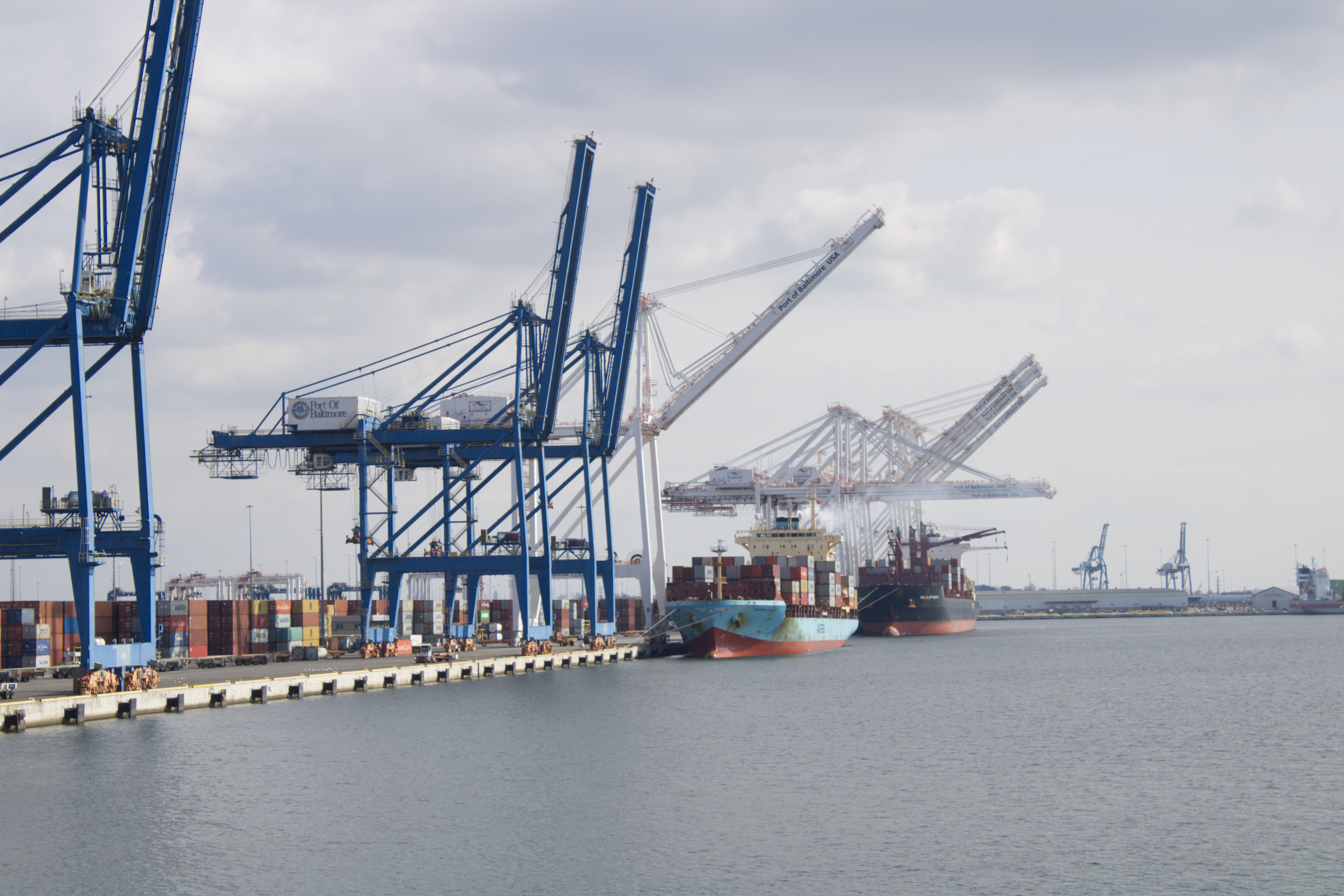I started this blog post a few weeks ago, but got distracted by more pressing concerns. I’m finishing it this afternoon after a morning spent watching news of the Francis Scott Key bridge collapse that occurred around 1:30 AM. Discussing this ship and it’s history seems strangely appropriate today.
This was further re-edited and re-organized as part of my move to Hugo in September 2024.
Meet the Savannah #
Recently my wife and I were able to join a tour of the NS Savannah . This is a very unique historical vessel: A nuclear-powered combination of a passenger vessel and cargo ship built at the end of the 1950s that transported people and good around the world for much of the 1960s.
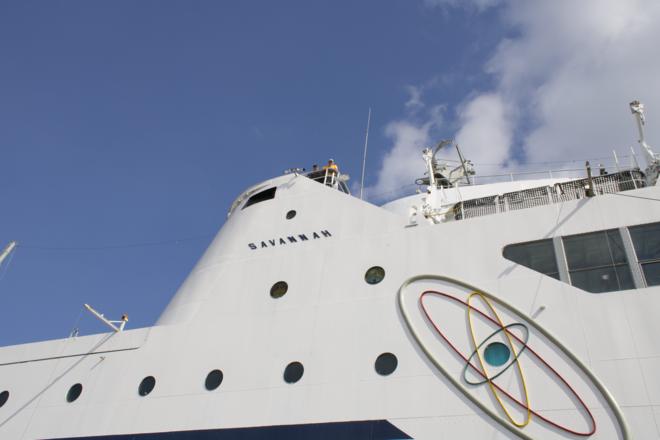
I think the Wikipedia link I use may be incorrect in a few places: The history of this unique ship has a lot of interesting turns and its story is still continuing. It is currently, to my understanding, a National Historic Landmark but not currently a Museum Ship. It’s also, currently, owned by MARAD, or the Maritime Administration , a segment of the US Department of Transportation. It’s also still under the jurisdiction of the Nuclear Regulatory Commission as it is currently being decommissioned: Essentially the same process as any civilian nuclear power plant. MARAD has their own page on the Savannah .
There is also the NS Savannah association , a non-profit that tries to keep the vessel as a historical artifact, which it certainly is. Their web page is a bit sparse unfortunately (and may be broken on some browsers). We were invited to the tour by the Baltimore & Chesapeake Bay Ship Watchers.
One of the first things I noticed about the Savannah is its location. It’s not docked in the Inner Harbor where historic ships are kept, but on an industrial dock between the SS John W. Brown and a dock where ships unload raw materials to be processed into construction vehicles. There’s a row of portable potties and multiple trucks, trailers, and bins that scream “worksite” which is what the ship is: in 2022 a major milestone was achieved in that the ship had its nuclear reactor removed through a hatch on the fore decks.
This is a working ship in a sense, it is being maintained and managed. Some of the dockside stuff is workspace for companies involved in the decommissioning process or maintenance to support that work.
Nuclear Reactors are uncommon on civilian vessels, to say the least. The Savannah is an exclusive club dominated by a few Soviet icebreakers and a handful of other attempts at nuclear powered vessels. It seems a lot more practical than the images that occasionally surface of attempts at a Fallout-esque nuclear powered automobile. A nearly 600 foot long seagoing vessel is already going to have a complex maze-like mass of engineering spaces. Moving to a reactor seems like it might even simplify things.
Entering the Vessel #

For background my wife and I have been on a modern cruise ship on a previous vacation. That was a ‘small’ ship by modern standards which departed from the Baltimore docks. That ship carried a couple thousand passengers every cruise, twice as many as the Savannah carried in its short active lifespan! One thing that we found ourselves thinking about during the tour was how weird a long trip would be on this ship. Despite its size passenger accommodations were really limited to two decks and brief sojourns to a lower deck for meals in the dining room.
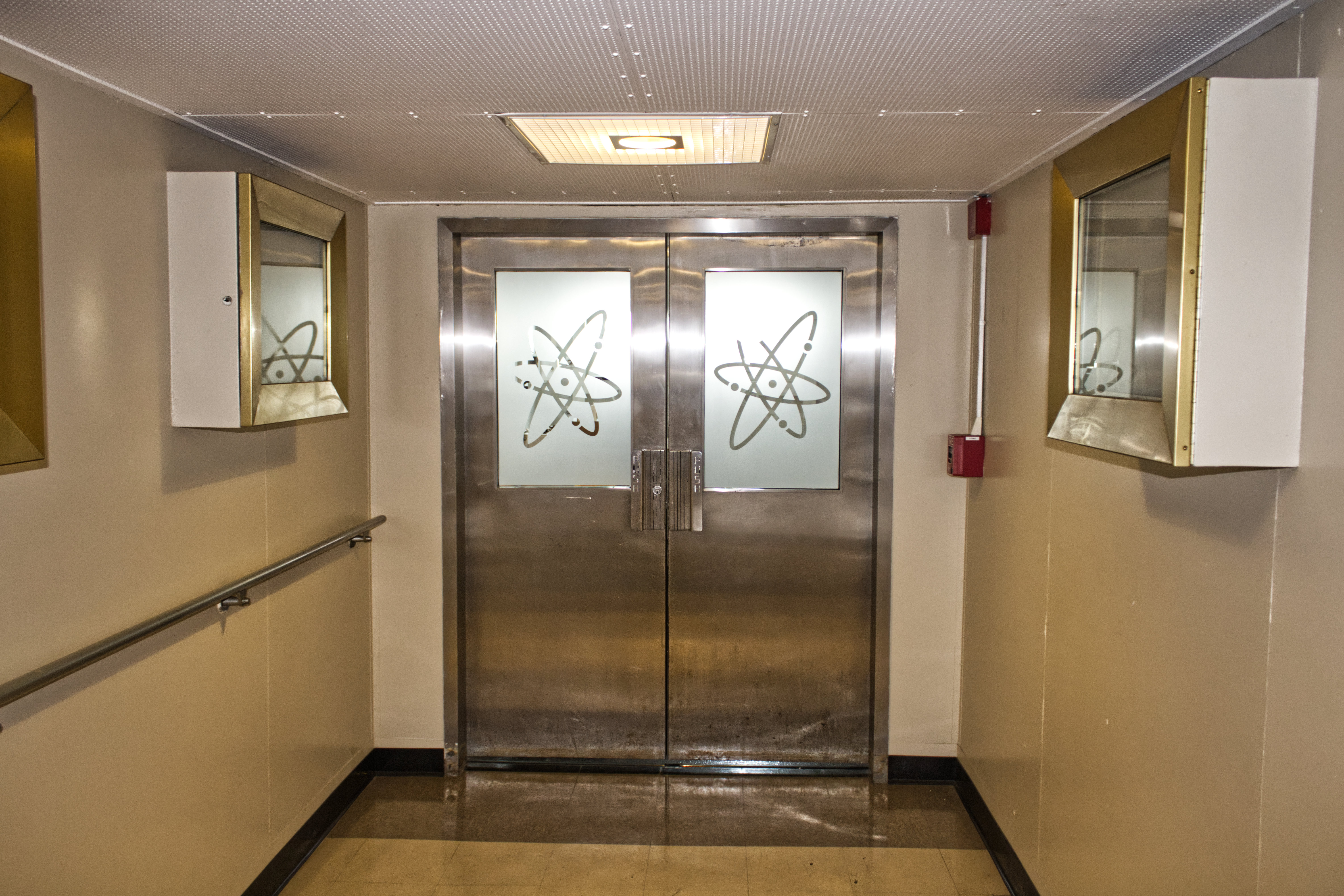
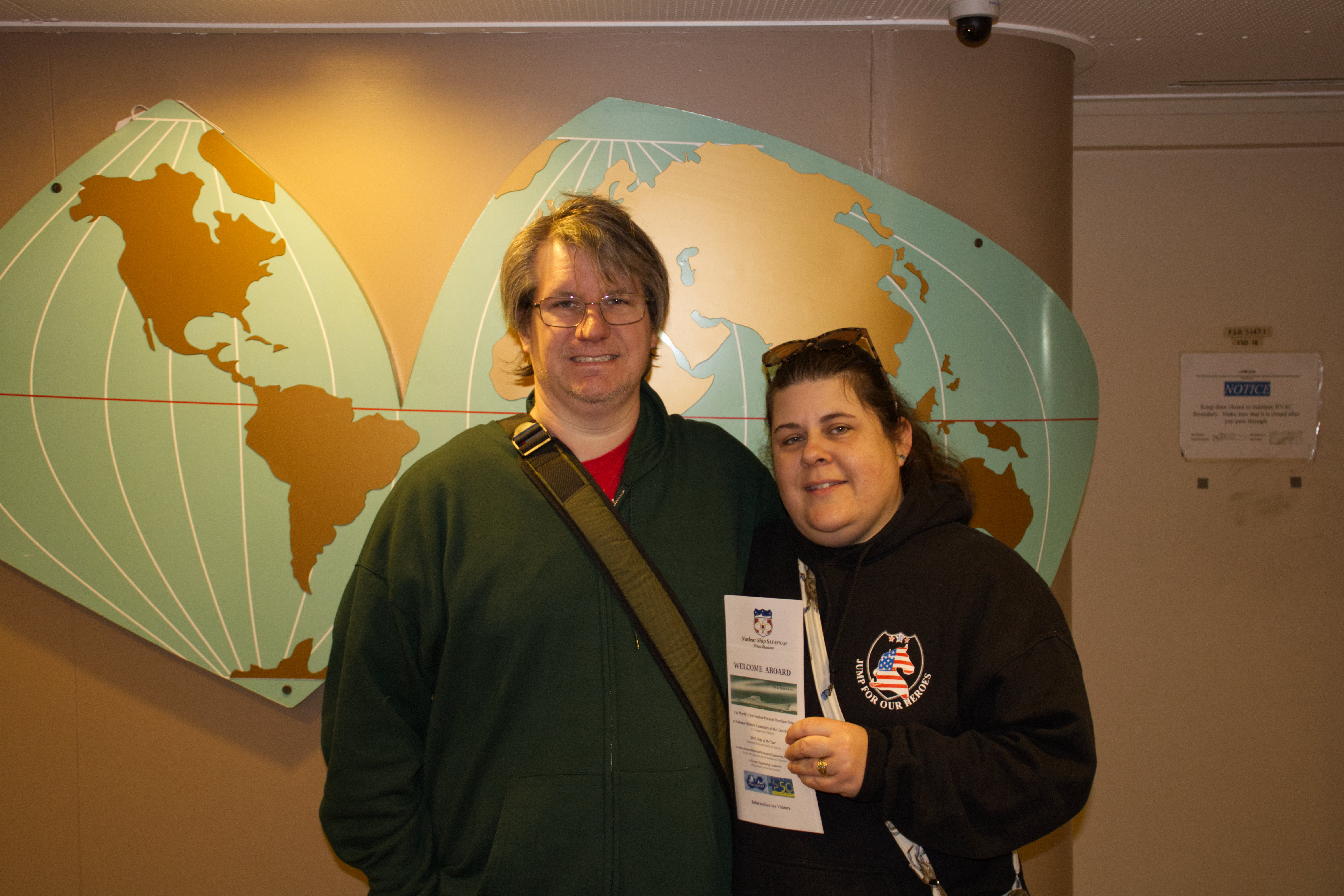
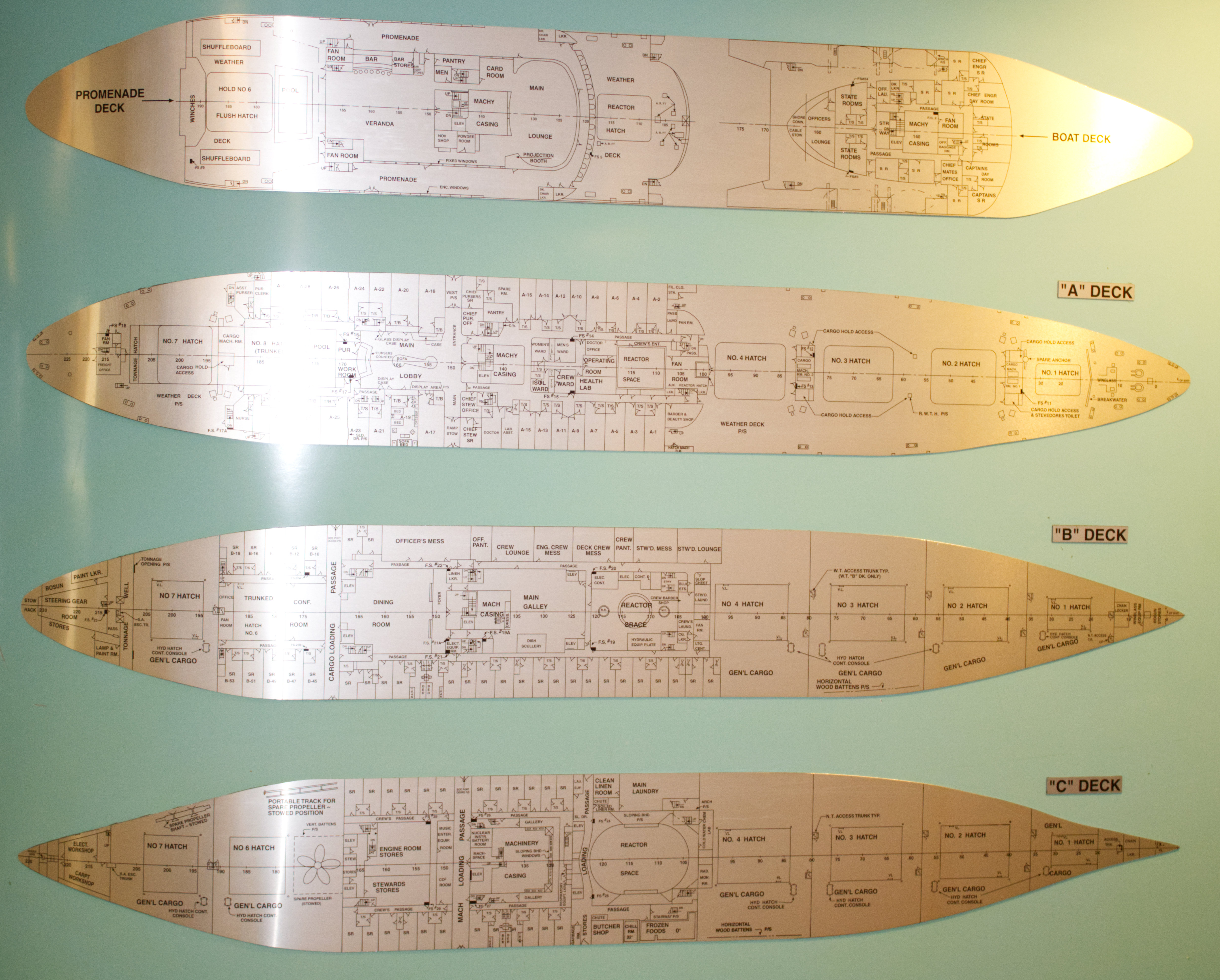
The Veranda and Pool Deck #
The Lobby was clearly a central location of the ship, but the Veranda was the heart when the ship was at sea, at least for passengers. We even had a brief lunch in the Veranda, albeit pizza and not the cheap drinks and similar that likely would have been served when the ship was in service.
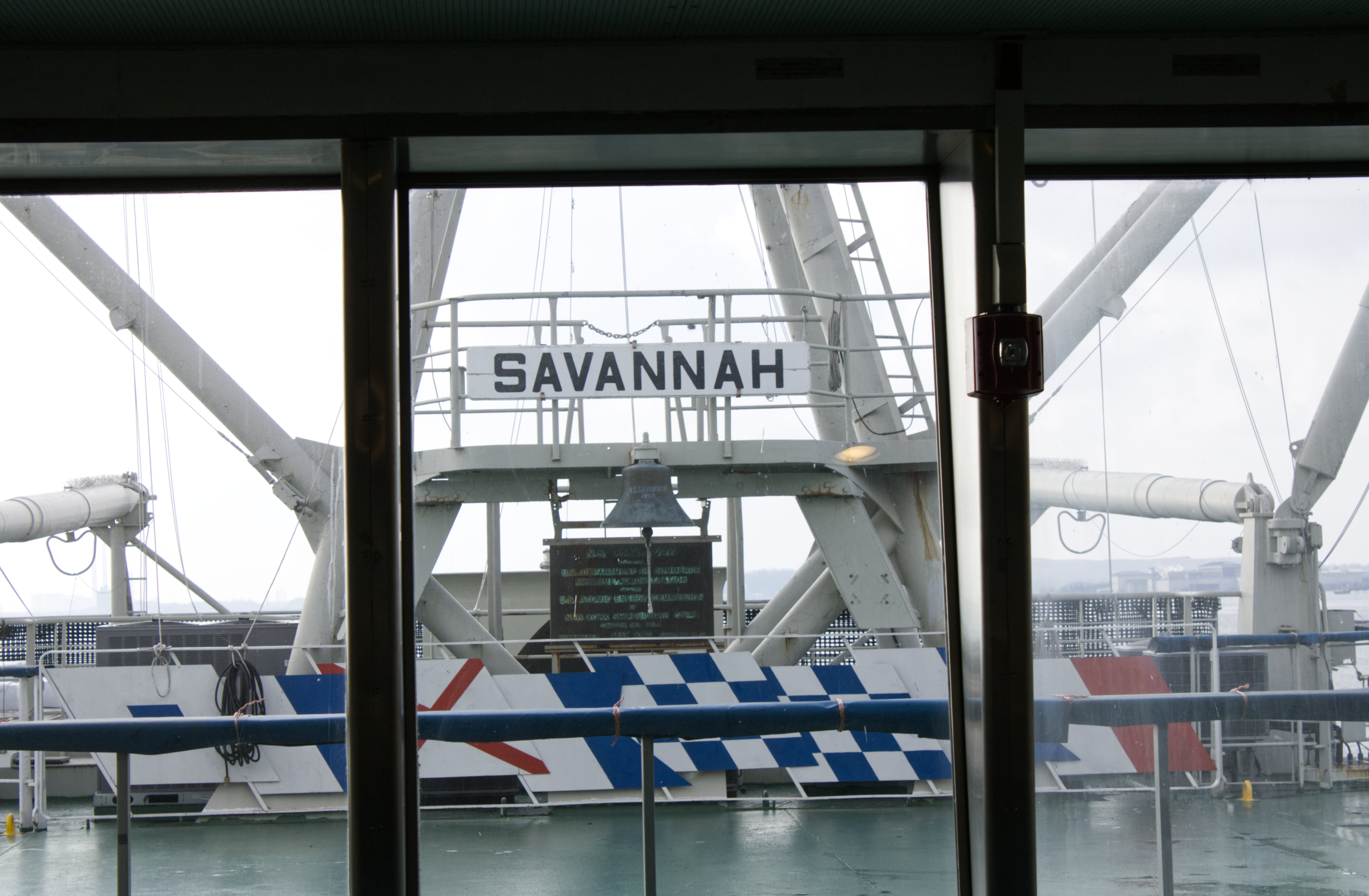
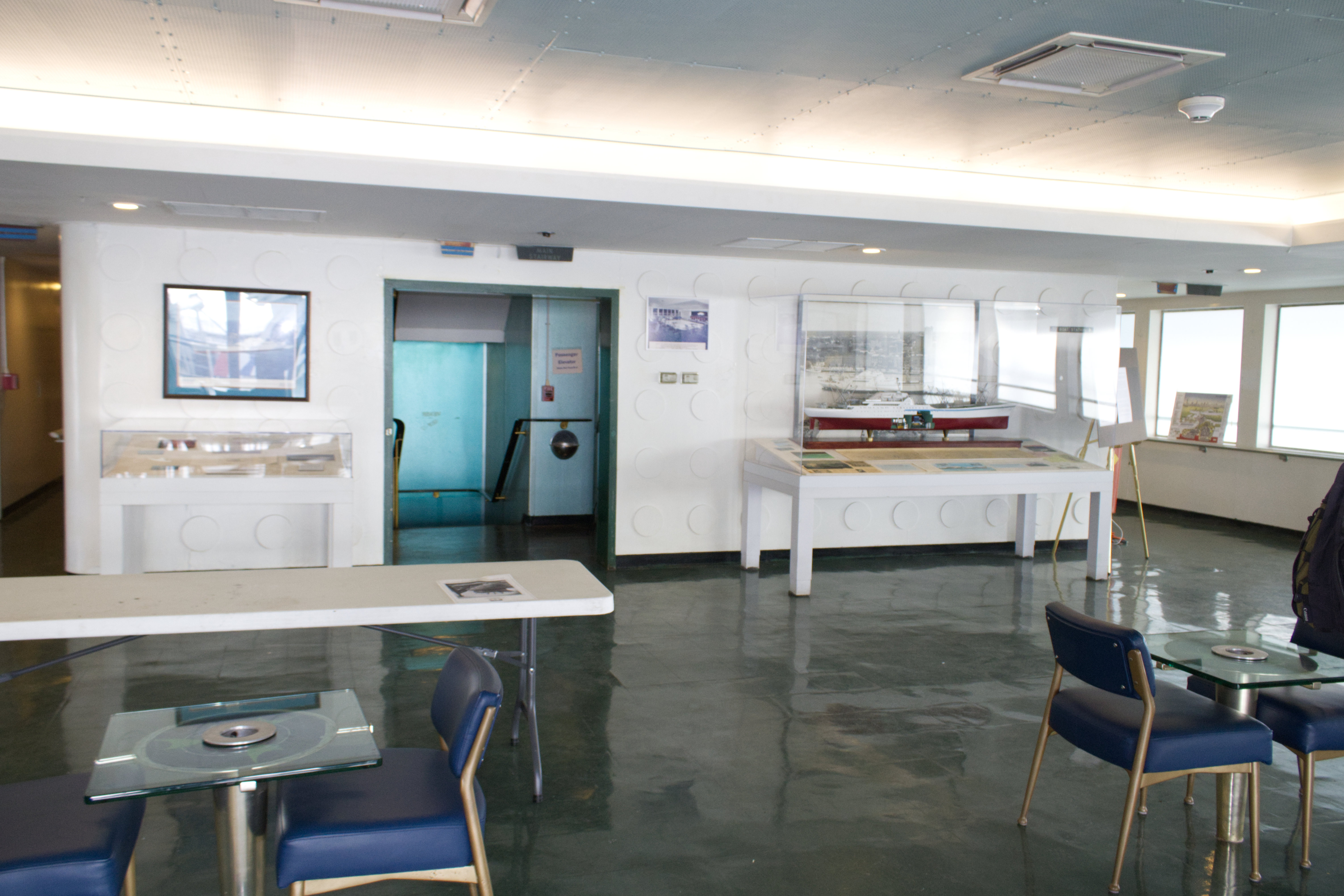
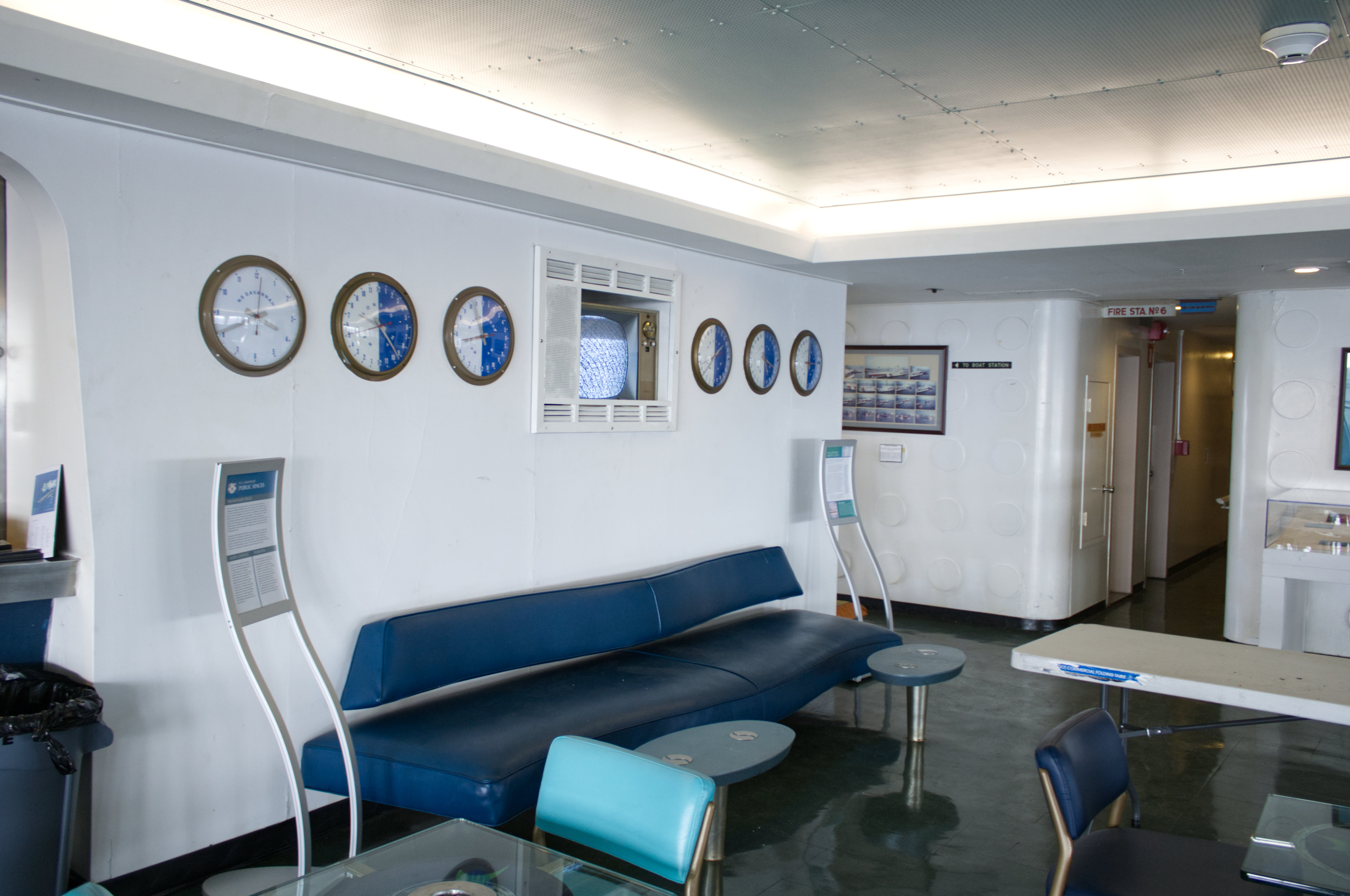
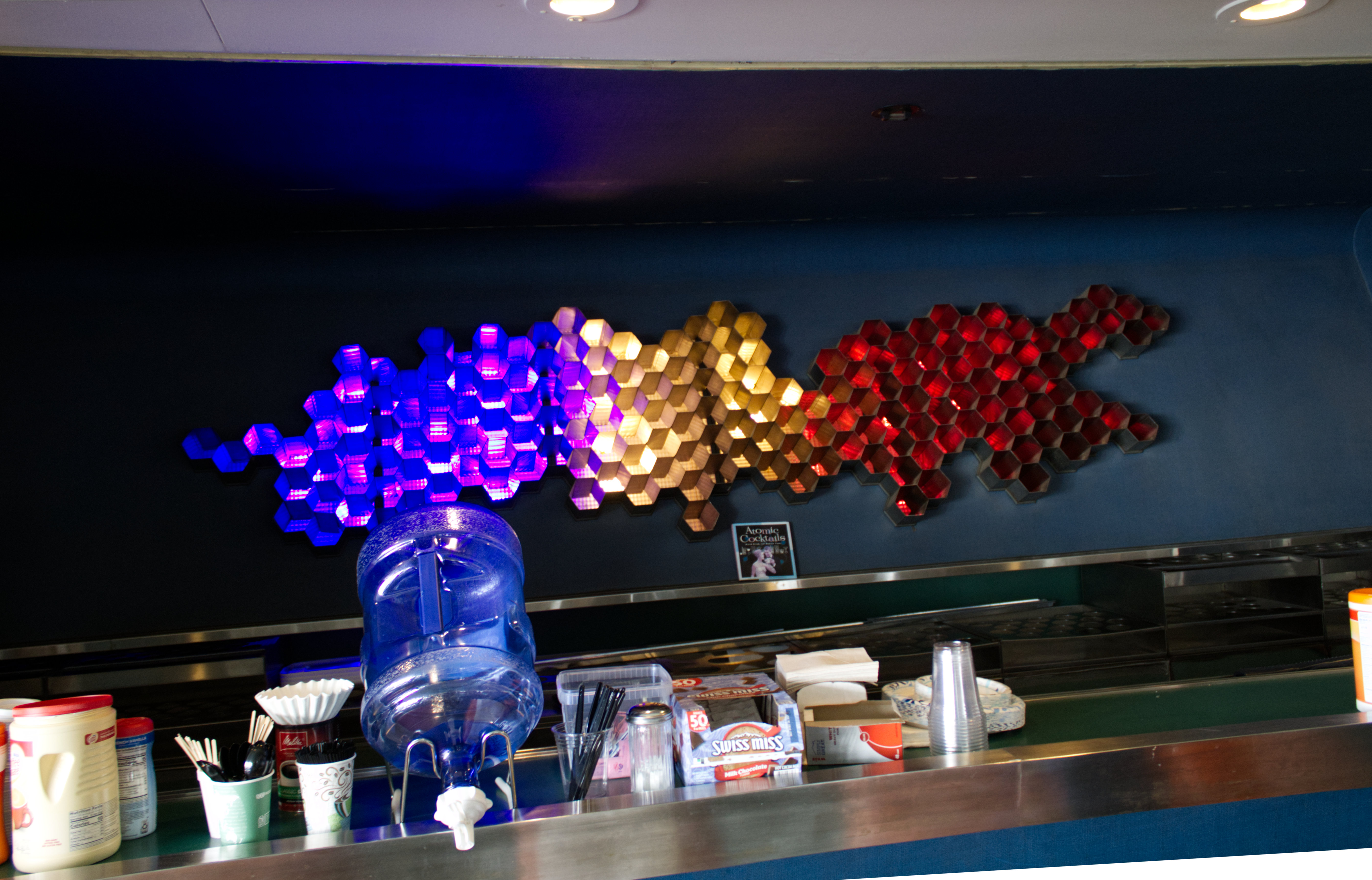
The Veranda was the the de facto heart of the ship. As we’ll see later the staterooms are small and, despite quality fittings and such, are somewhat minimal. It’s clear that passengers would spend most of their time in the Veranda taking advantage of the various entertainments including the pool and bar. This room has doors to a small deck used by the passengers which even had a tiny pool (now covered).
One things the great docents mentioned is that the passengers would be encouraged to go ashore when the ship was in dock. The ship’s dual nature as a combined cargo and passenger vessel meant that the pool was right next to a large hatch leading to one of the cavernous cargo holds. When in port the ship would not be as hospitable to passengers.
Cargo is one of the reasons the Savannah is something of a relic. It was built just before containerization became the norm. The ship was built in the era when cargo would be loaded loosely and would need to be carefully maneuvered out of holds in a process that required large numbers of dockworkers and a lot of coordination. If you’re thinking of old pirate movies or something like Titanic where cargo must be moved out of dark holds in nets or on pallets, that’s correct up through the 1960s. I actually listened to a good podcast mini-series on containerization a few years ago.
The switch to standardized modular containers meant the loading and unloading process was much simpler and faster. This allowed larger ships and more efficient transport and made much of the modern global economy viable. The Savannah had some updates welding container mounts to the decks, but this was a patch to a design that was already dated.
The Veranda deck was also home to a large room used for events and similar. This has been named the Eisenhower Room or just the Ike room as the ship is part of his legacy under the “Atoms for Peace” banner. This was set up as a conference room during our tour and we did in fact observe a brief meeting discussing the next chapter in the ship’s history. I’ll discuss that more later.
Crew Quarters #
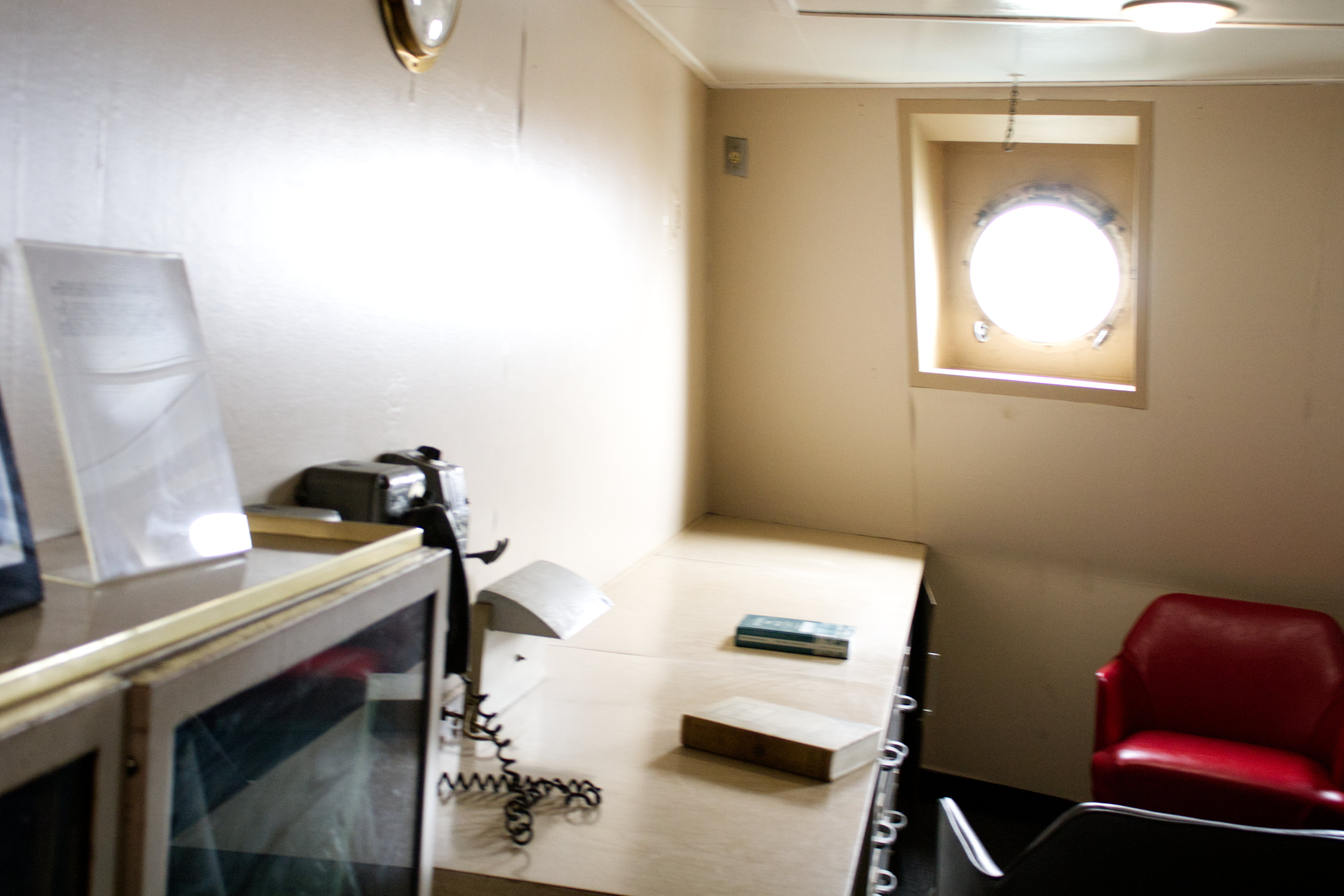
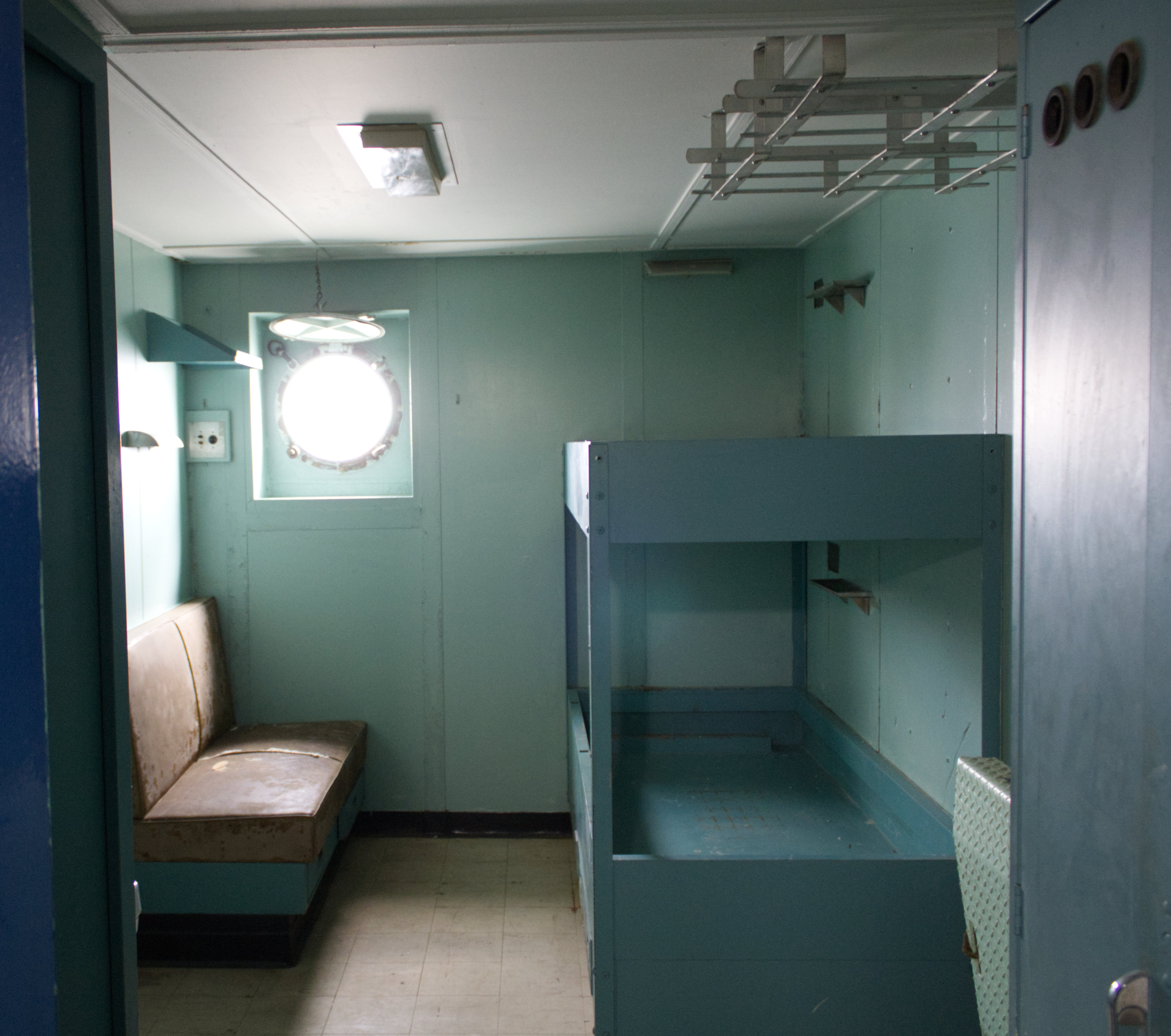
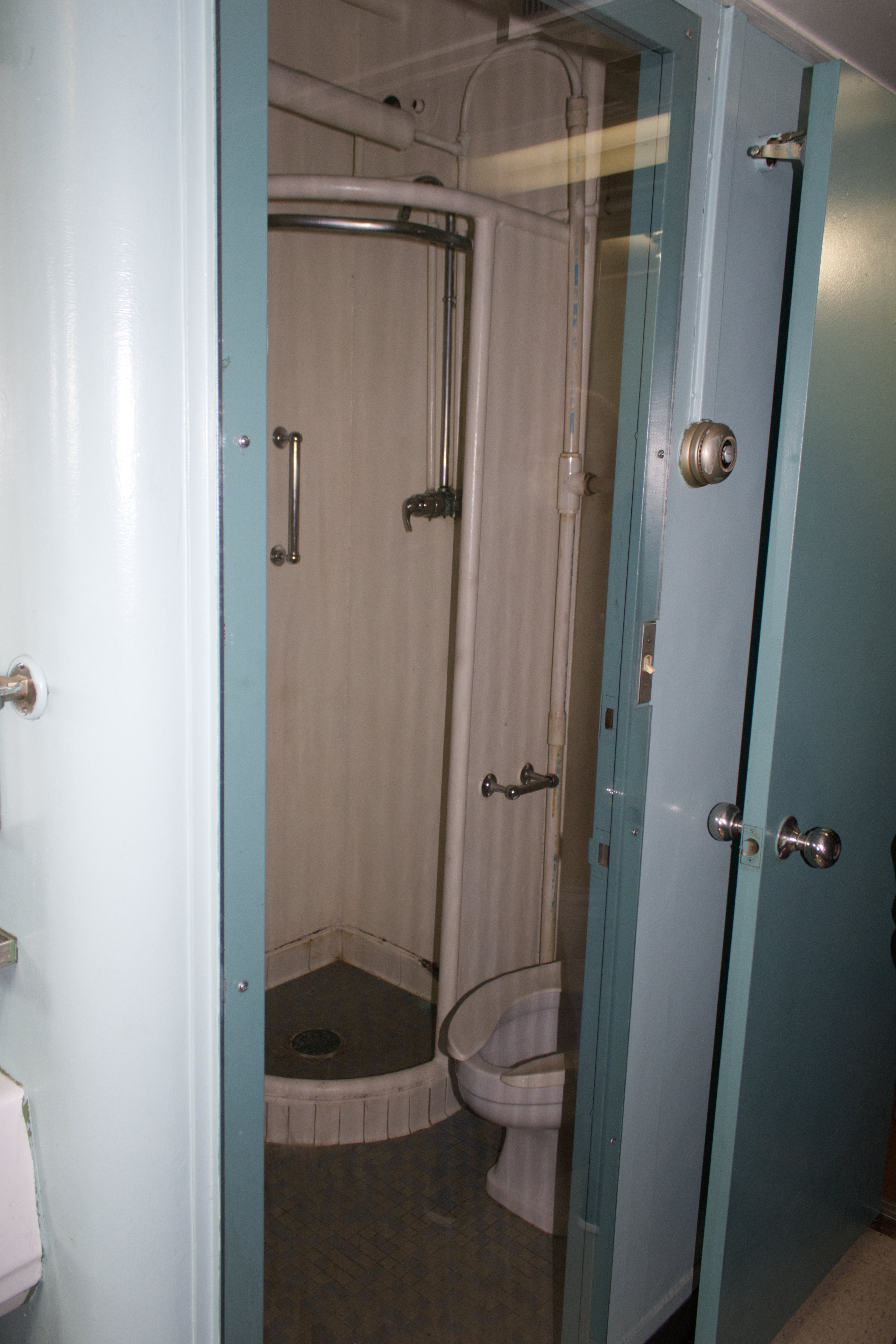
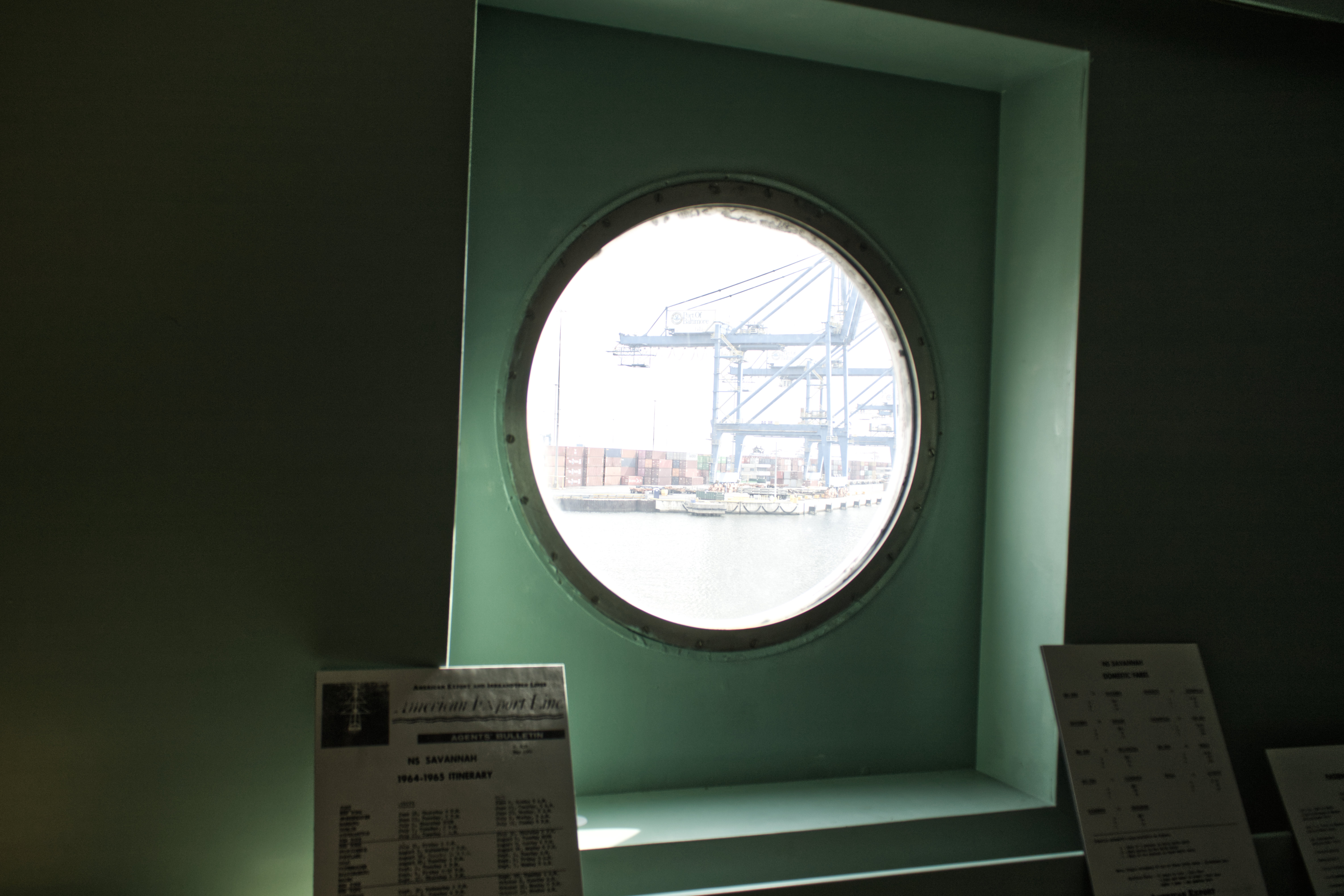
I sadly didn’t get any good shots of the staterooms due to the tour clumping up. They’re tiny, even compared to modern cruise ships, with a sealed porthole for natural light. Our docent made it clear that passengers would not spend a lot of time in their state rooms. The rooms we saw did have some remains of very late 50s/early 60s furnishings, designed with lots of colored wall panels and similar.
Bridge and Chart Room #

The bridge is up a narrow ladder and has the expected gauges and controls. It is, apparently, mostly normal albeit well equipped for the era in which it was built. The only thing that indicates that this is an unusual ship is a small indicator panel: We’ll see the reactor control room when we go below decks. There’s a SCRAM button to force a shutdown, but otherwise it’s mostly normal.
It was a well-equipped vessel apparently. Another oddity of the ship was that it had the best available tech in many places beyond the unusual power plant. It was expected that it would demo sonar and similar to demonstrate American technical superiority.
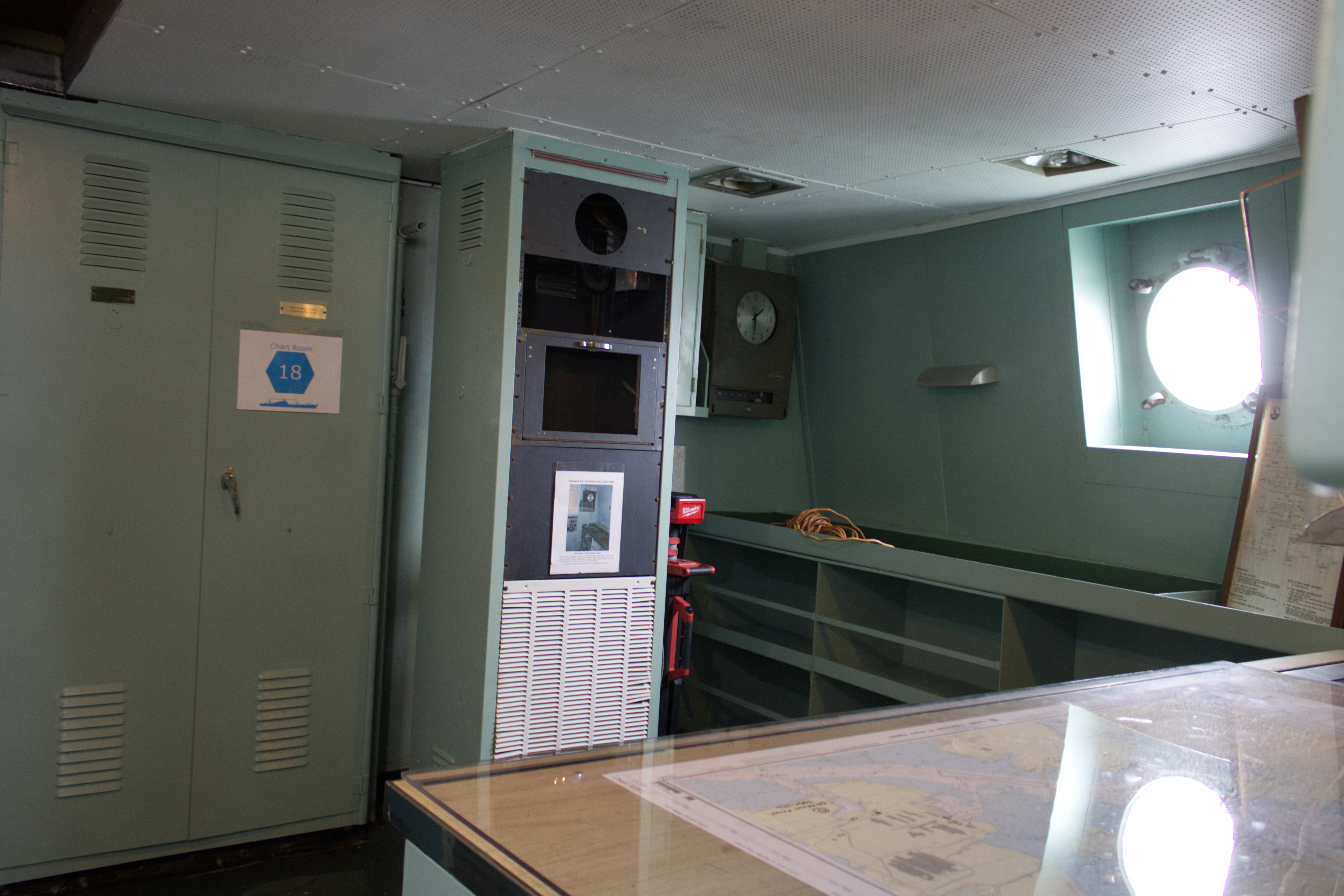
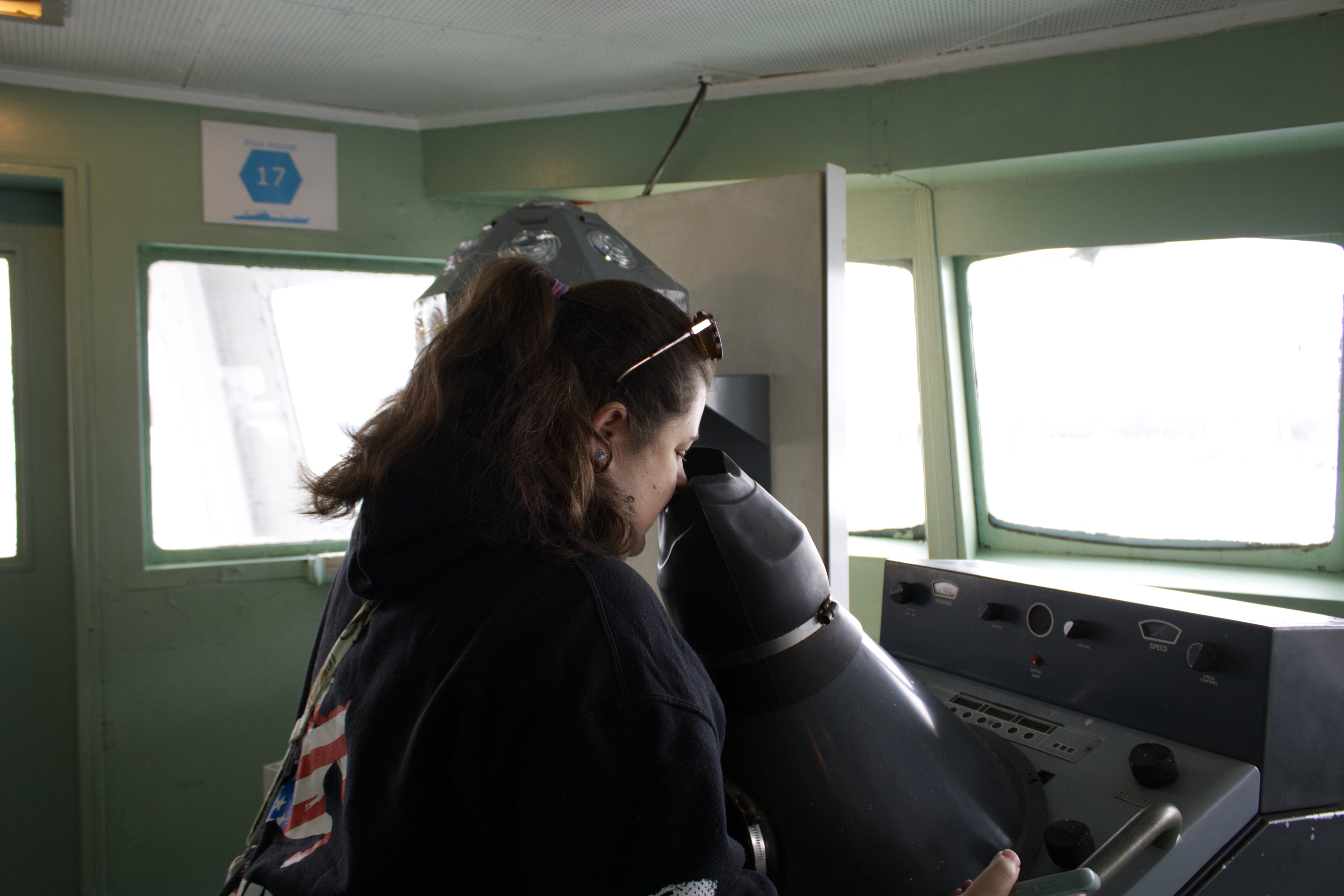
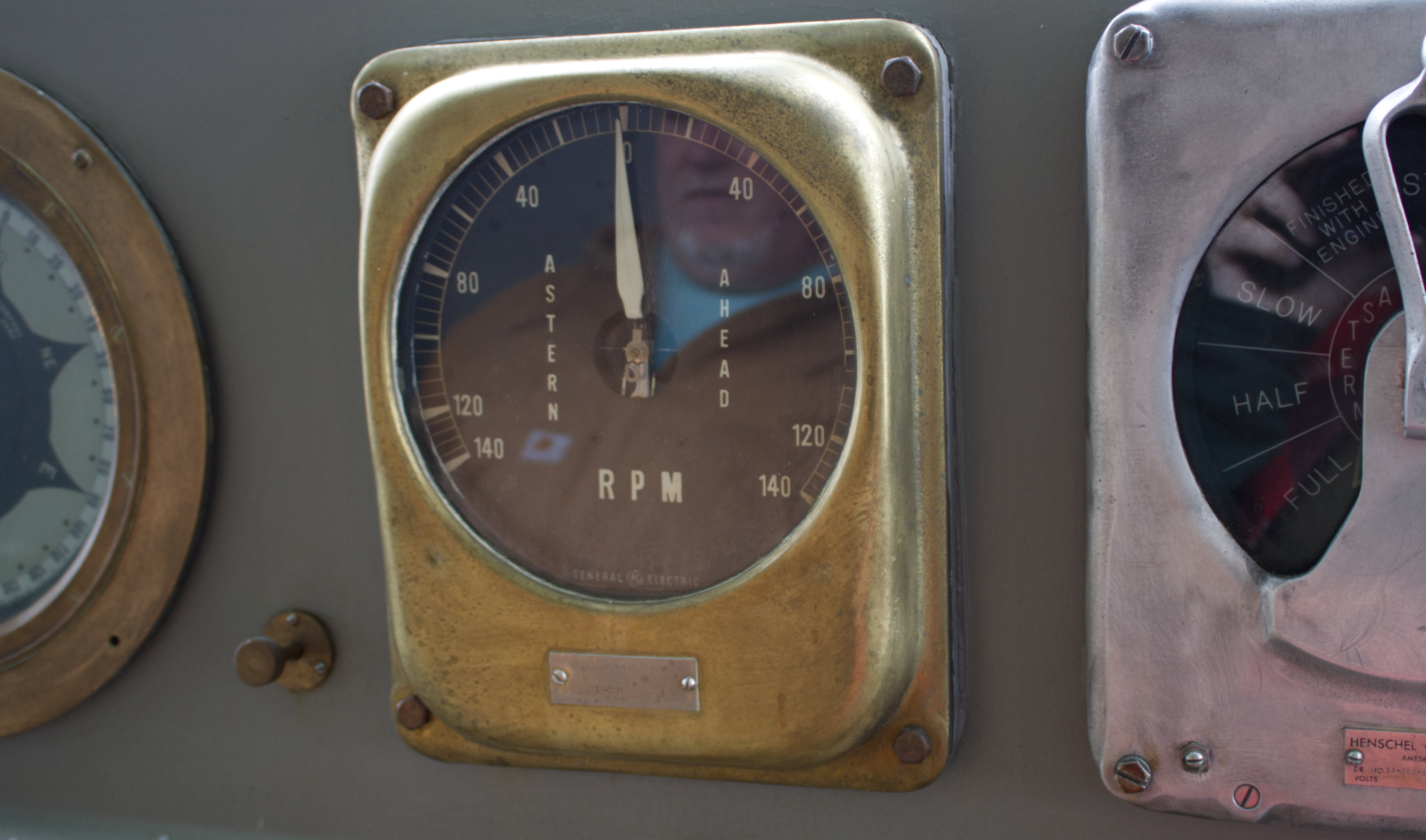
To my understanding the ship did not have great visibility: The design was beautiful and the ship was faster than the designers had expected, but large forward hull elements blocked vision from the elevated bridge.
Dining Room and Kitchen #
Below decks was mostly crew space. Passengers would presumably be restricted to one deck with brief sojourns to a lower deck for meals and perhaps an occasional visit to the upper deck areas at the pleasure of the captain. (In my head I’m clearly plotting a 60s spy-movie drama where there’s clandestine discussions in the chart room.)
The Dining Room has lots of design cues appropriate to the era: One wall has art resembling a climbing wall apparently intended to resemble the vessel’s atomic core, while the walls and carpets have simple patterns of shapes that seem very era appropriate. The light fixtures have an ‘atomic’ style familiar with art from the era and of course the place setting bear the ship’s logo.
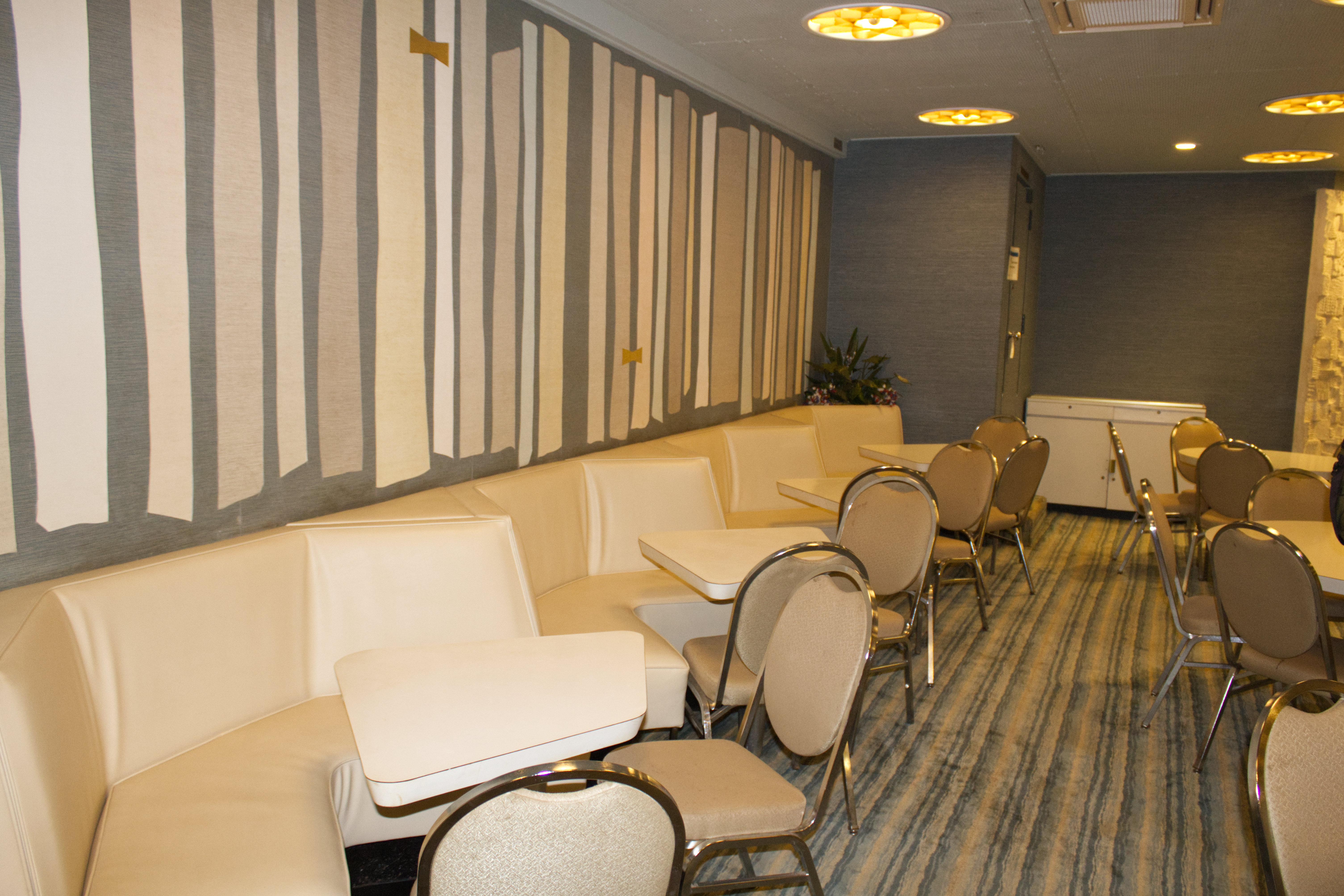
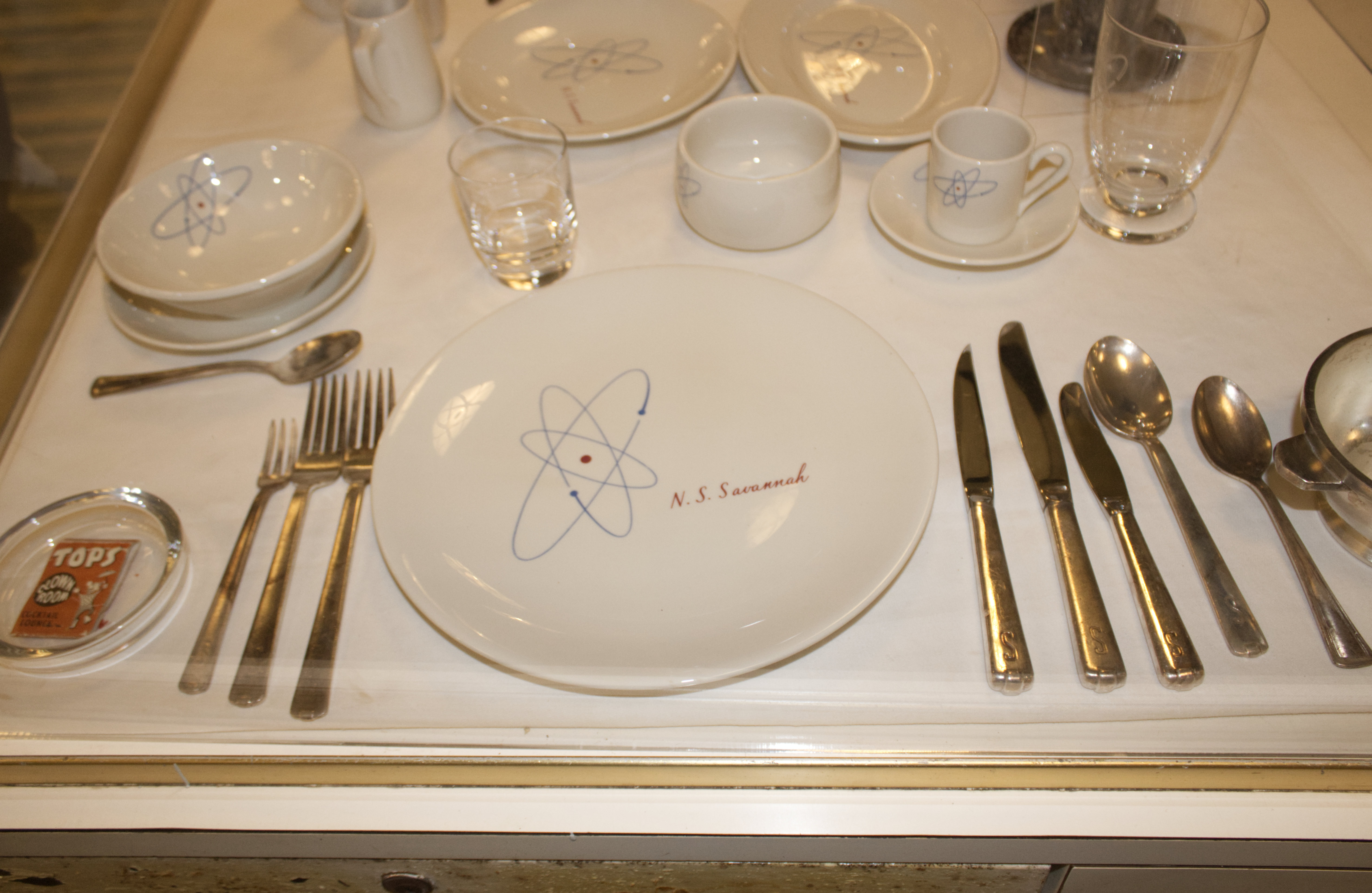
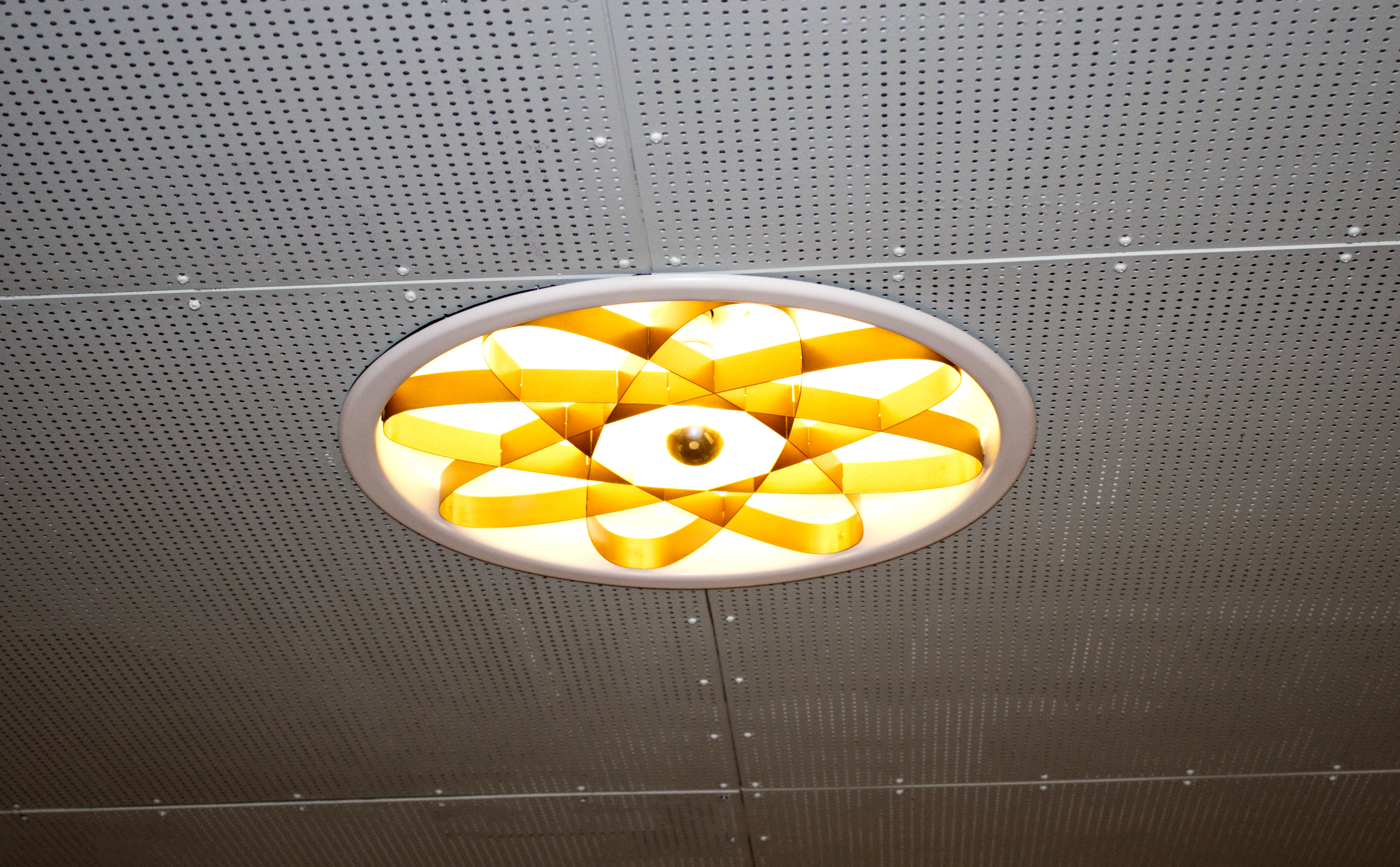
The kitchen is a large section and cramped with equipment. Another inventive feature is the ship’s microwave, a massive piece of equipment that almost looks like a refrigerator or similar in size. It’s a Radarange made by defense contractor Raytheon, now RTX . Supposedly the microwave took several hours to warm up, but was used to cook roasts much faster than the ship’s normal ovens.
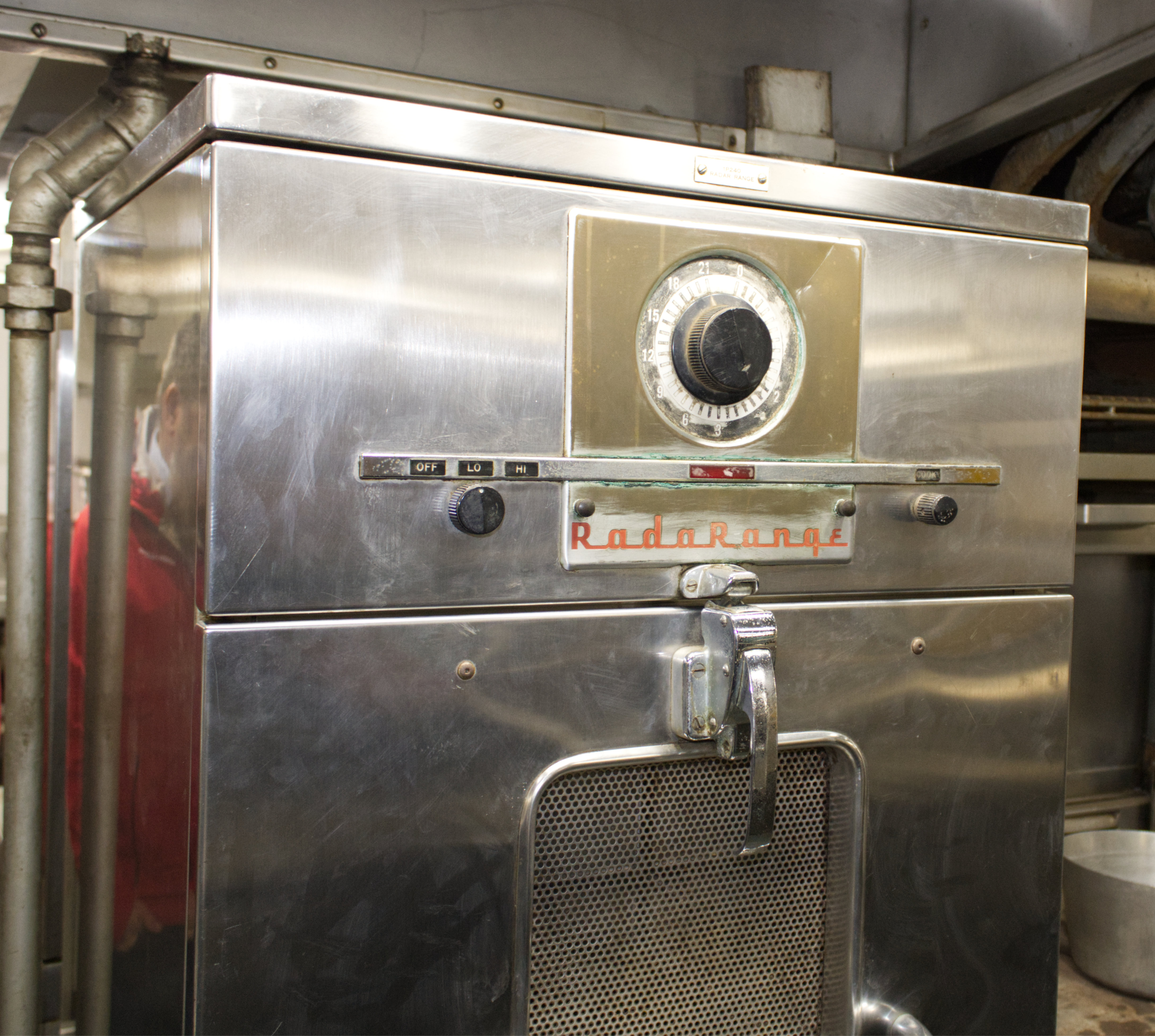
Engine Room #
The engine room is a large space, but smaller than ships of the era would expect. It’s gearing to take the heat generated by the adjacent reactor and convert it into useful movement as well as electricity.
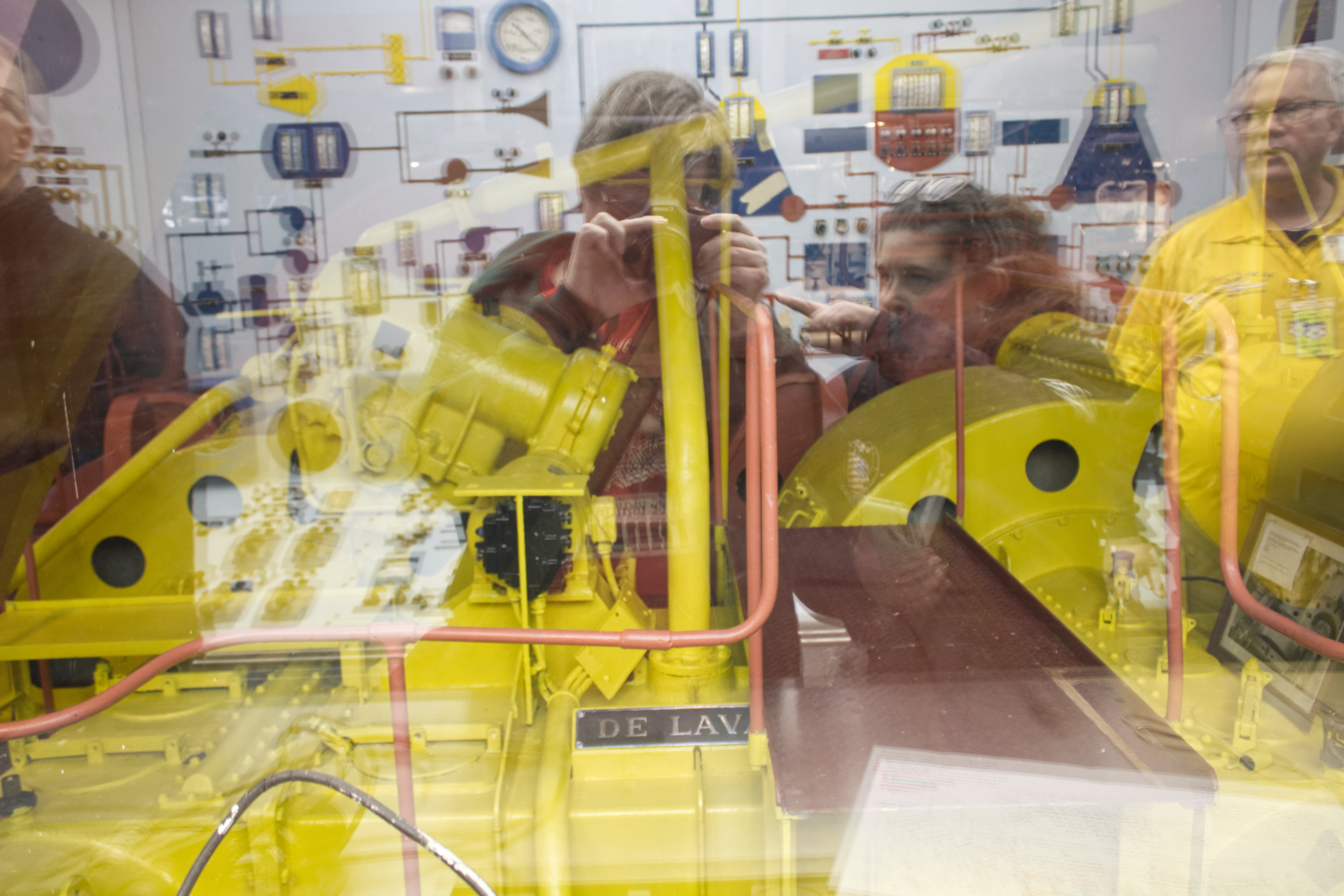
The lowest decks are off-limits due to damage, but the main engine room has been cleaned up as much as possible. There’s a large complex room for the various gearing and transmission systems the ship would need. Presumably these would be even bigger if not for the reactor.
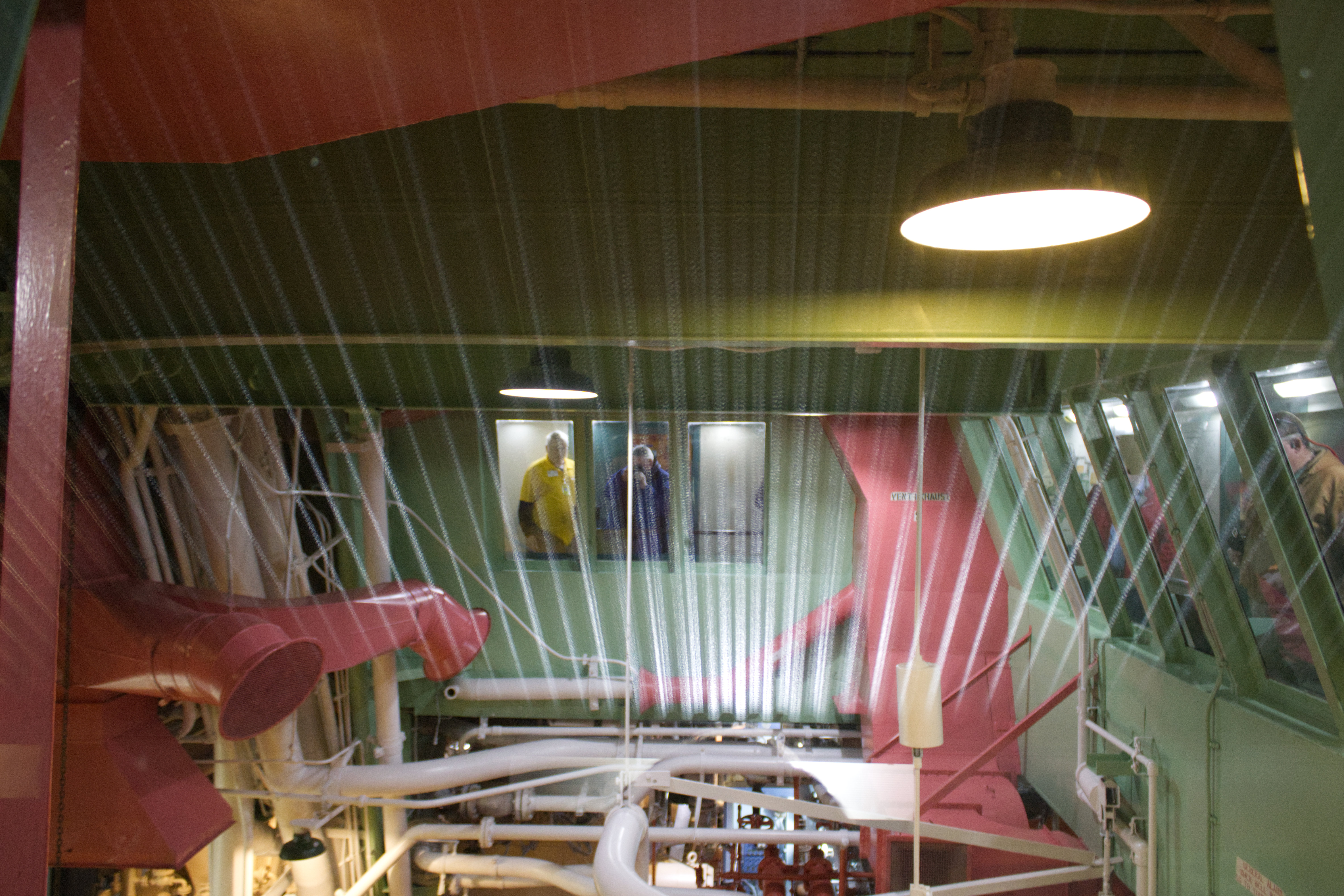
A large gallery makes a ‘U’ shape around the engine room,w hcih was brightly painted. I was told the paint matched the ship’s scheme when actively sailing: The bright colors were meant to photograph better in black & white as would have been common for journalists that would have been given tours of the ship as it made diplomatic stops.
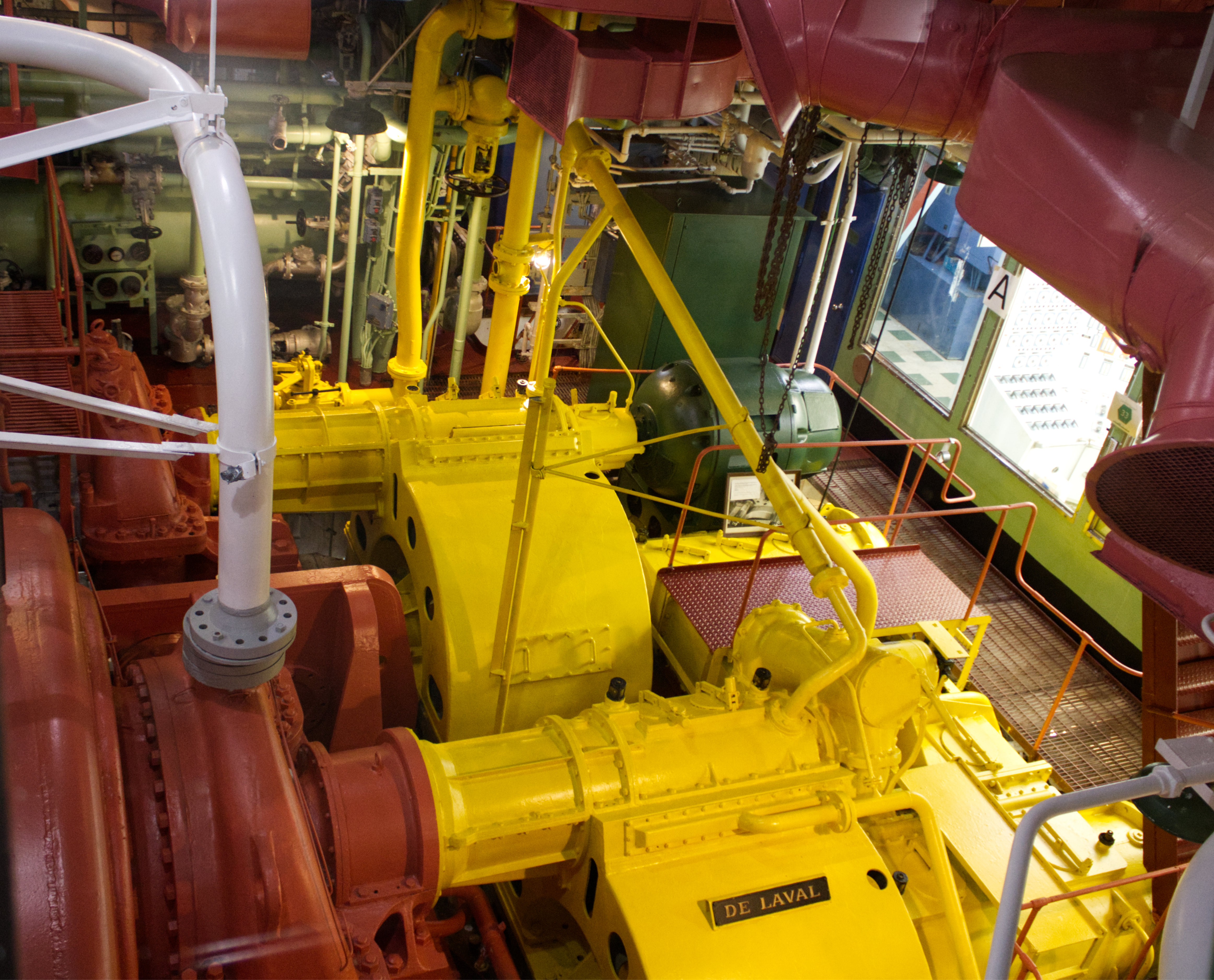
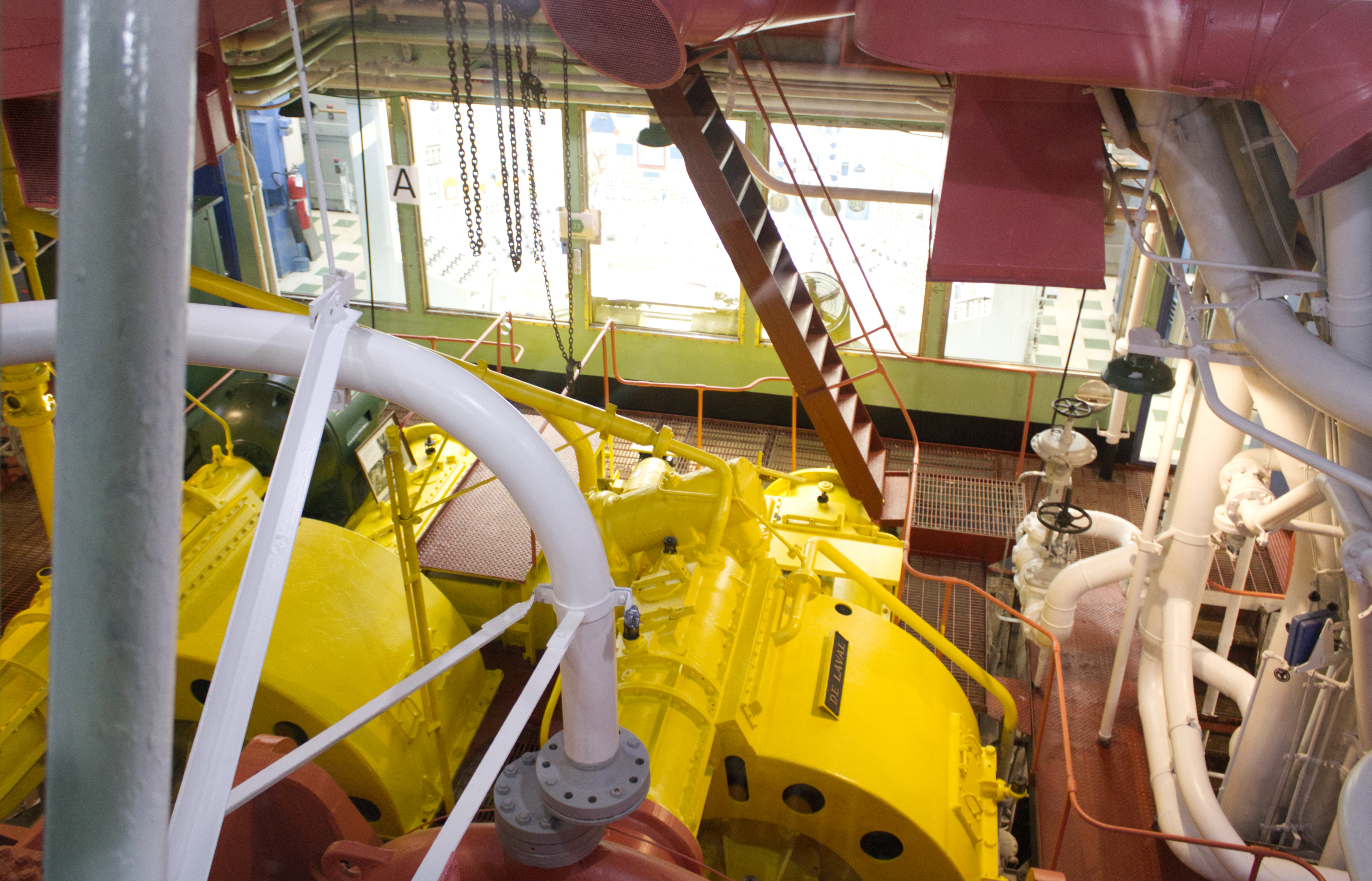
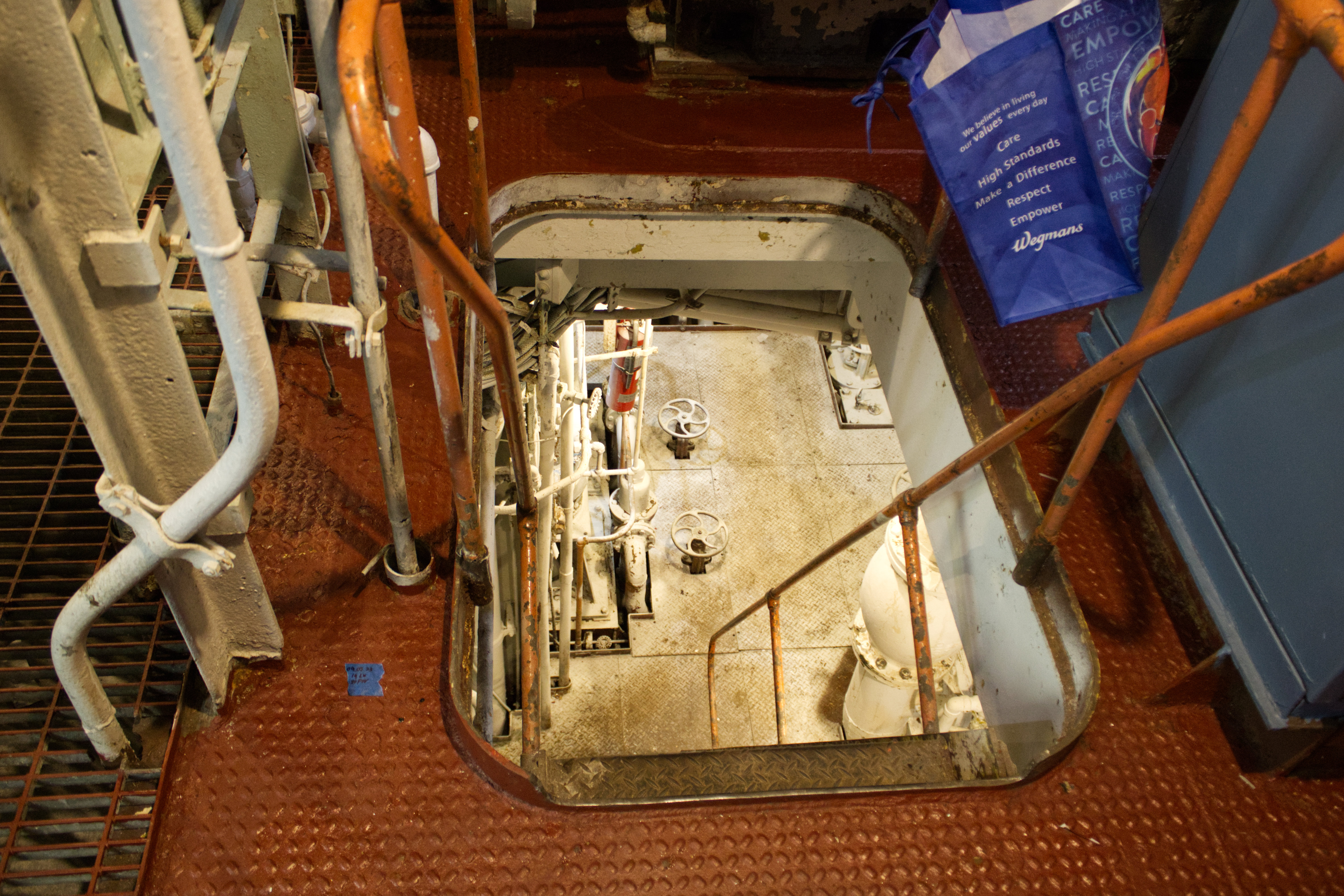
Control Room #
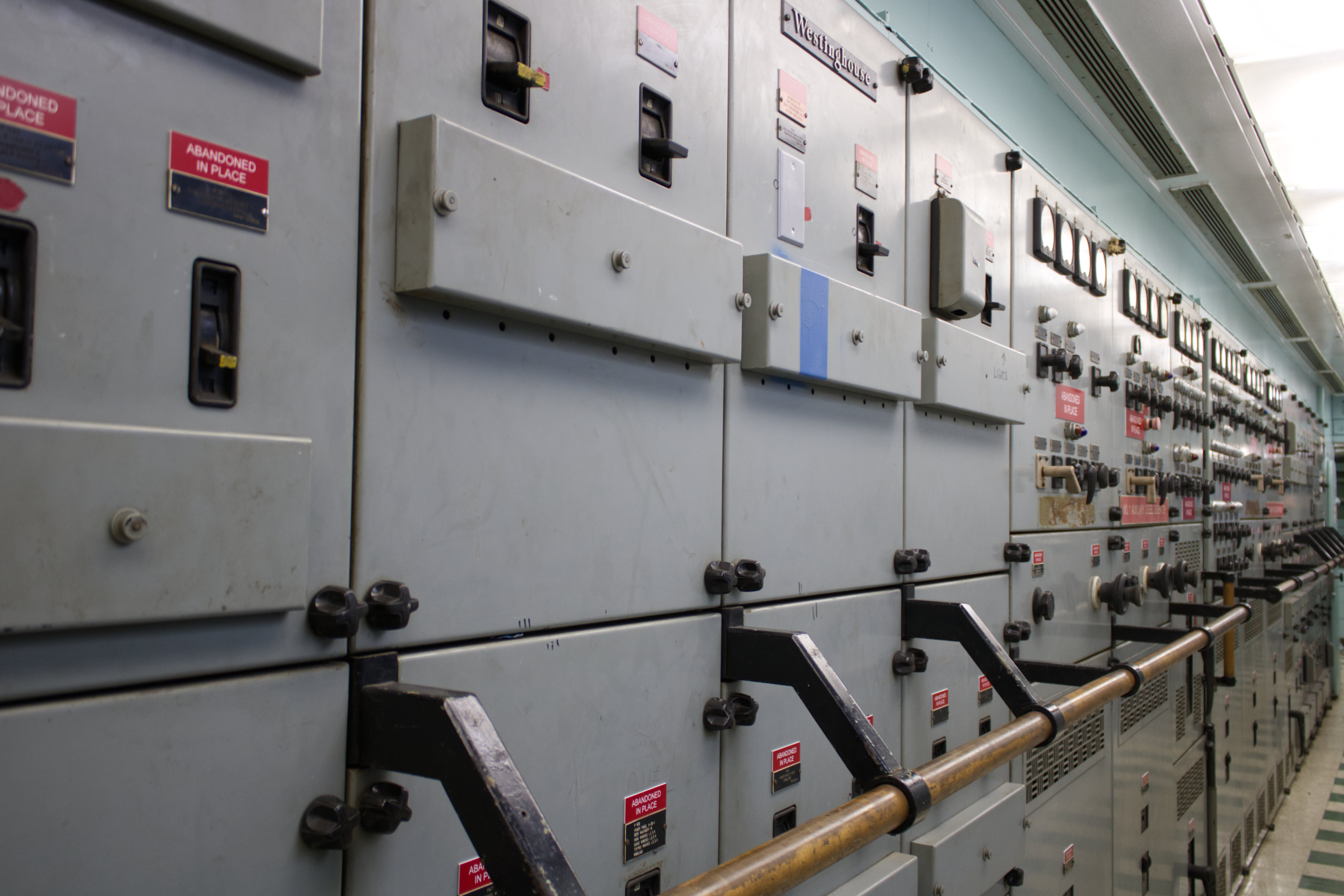
The Control Room would have been staffed by specially-trained crew to operate the ship’s reactor. This was a special skill and safety was their primary concern. Due to the era, the ship’s vitals were tracked via paper forms and even a chalkboard. Note the floor of the control room which feature’s the ship’s large ‘atom’ logo.
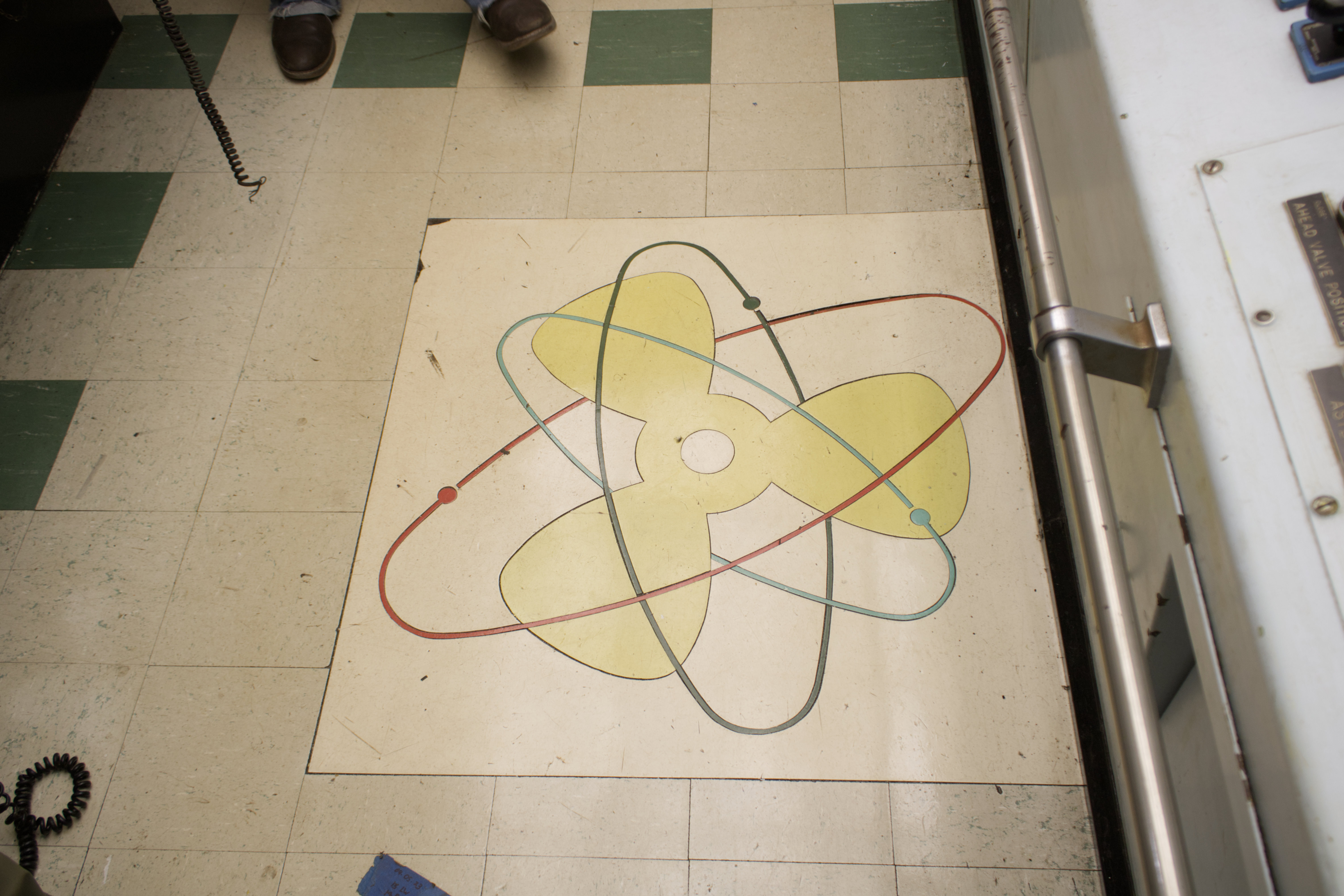
A restoration effort is in progress to replace controls and indicators that have failed over the years: I’ve seena comment that this would have been a very ‘modern’ design when it was built, created to be ergonomic and simple comapred to other reactor control rooms of the era.
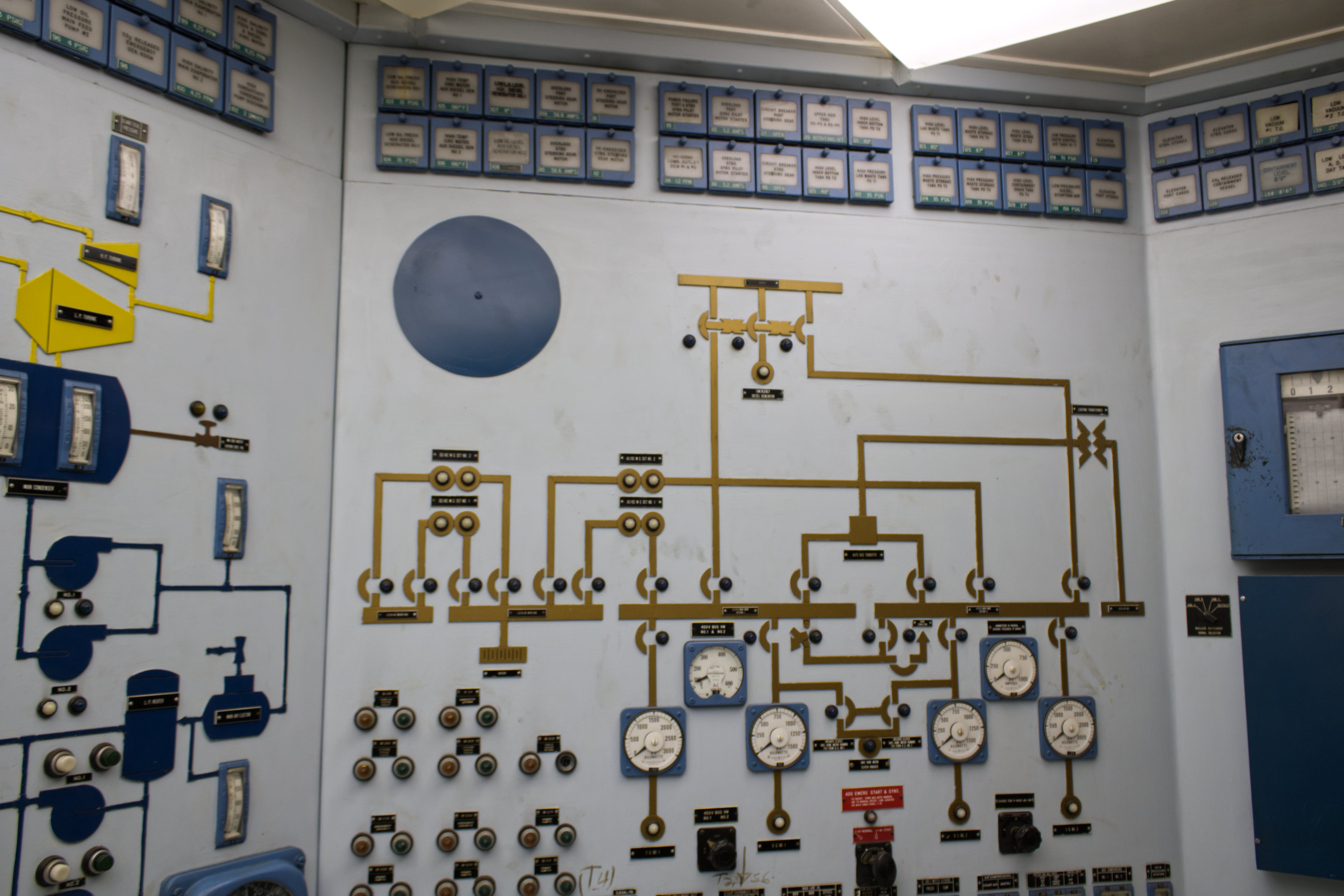
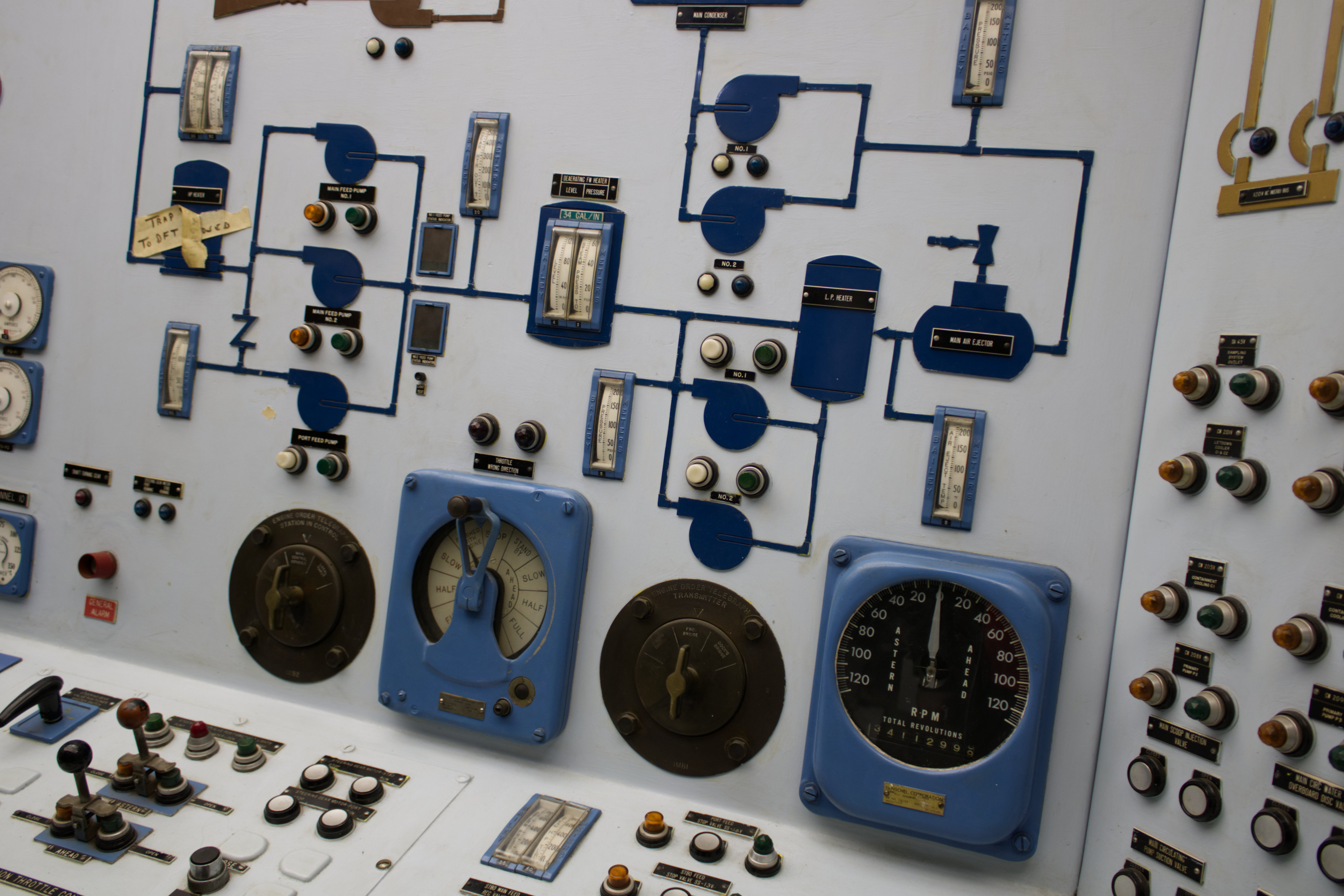
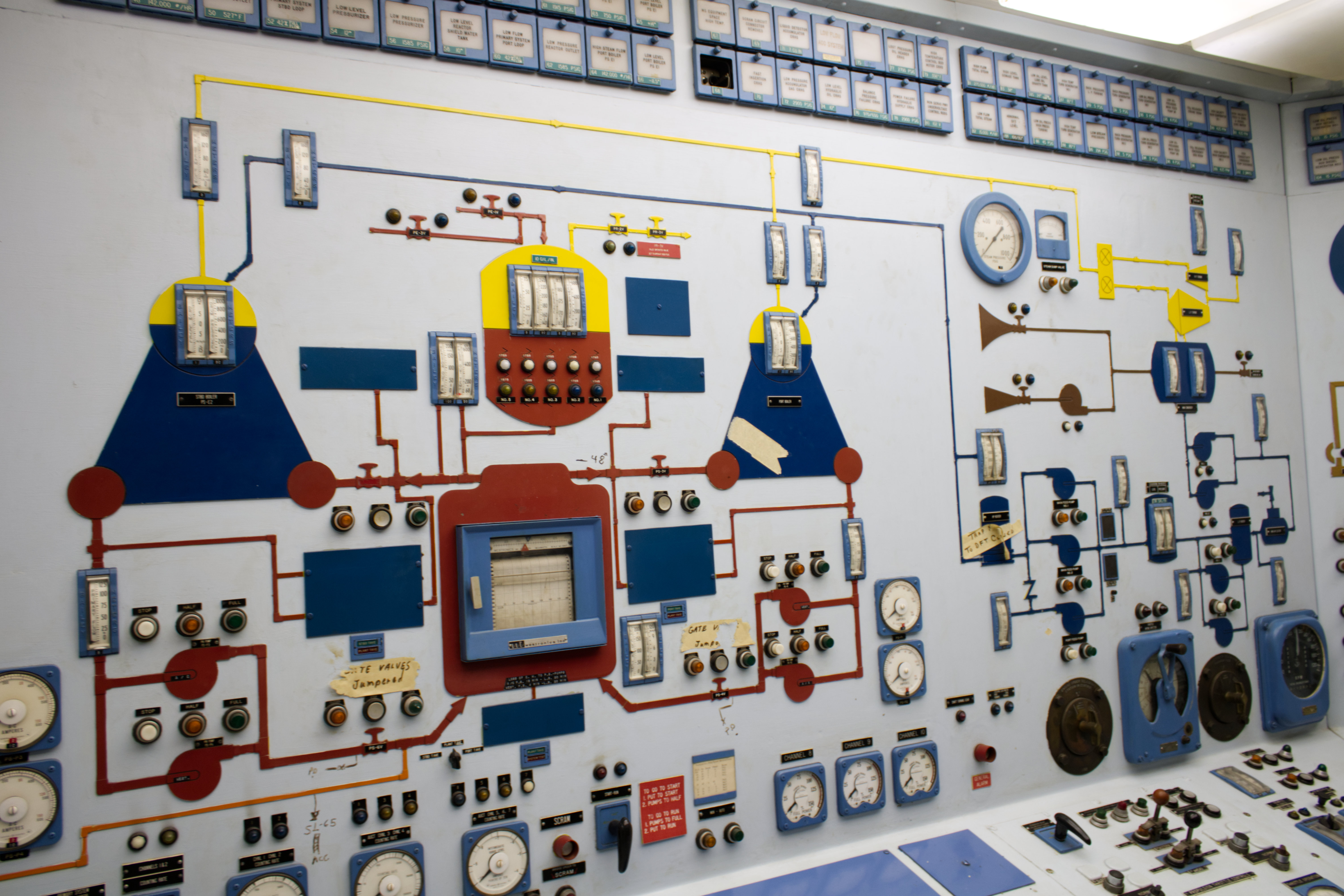
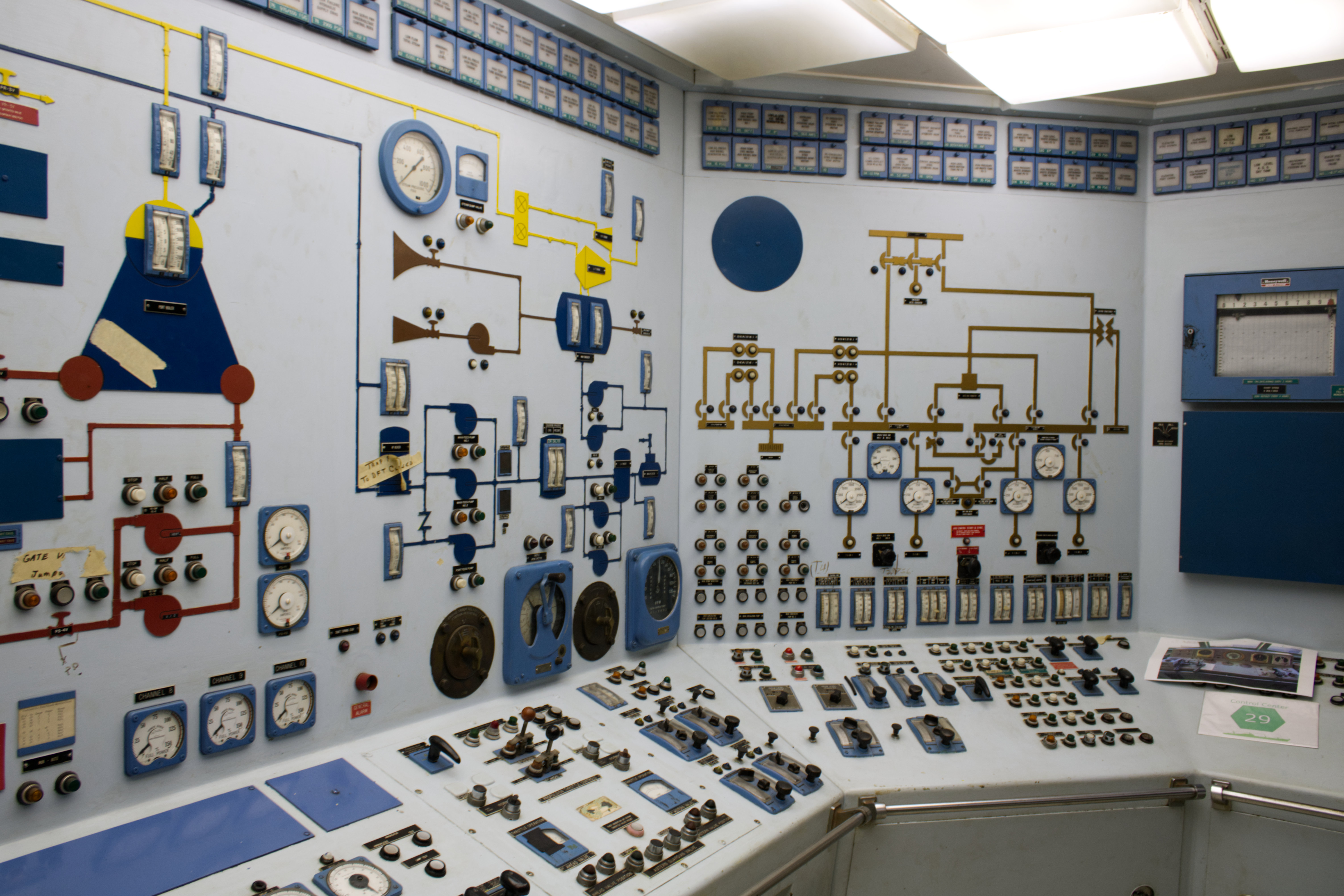
The Control Room is intimidating, but also felt like a movie set: A low-budget movie, perhaps even an old Doctor Who episode. The main room is a small, tight space accessed by a narrow passage from the engineering space. There’s the massive breaker panels, and then a small space covered in primary-colored diagrams linking various gauges, indicators, and controls. It almost looks fake as it seems so random and scattered. It’s very low-tech to modern eyes.
On Deck #
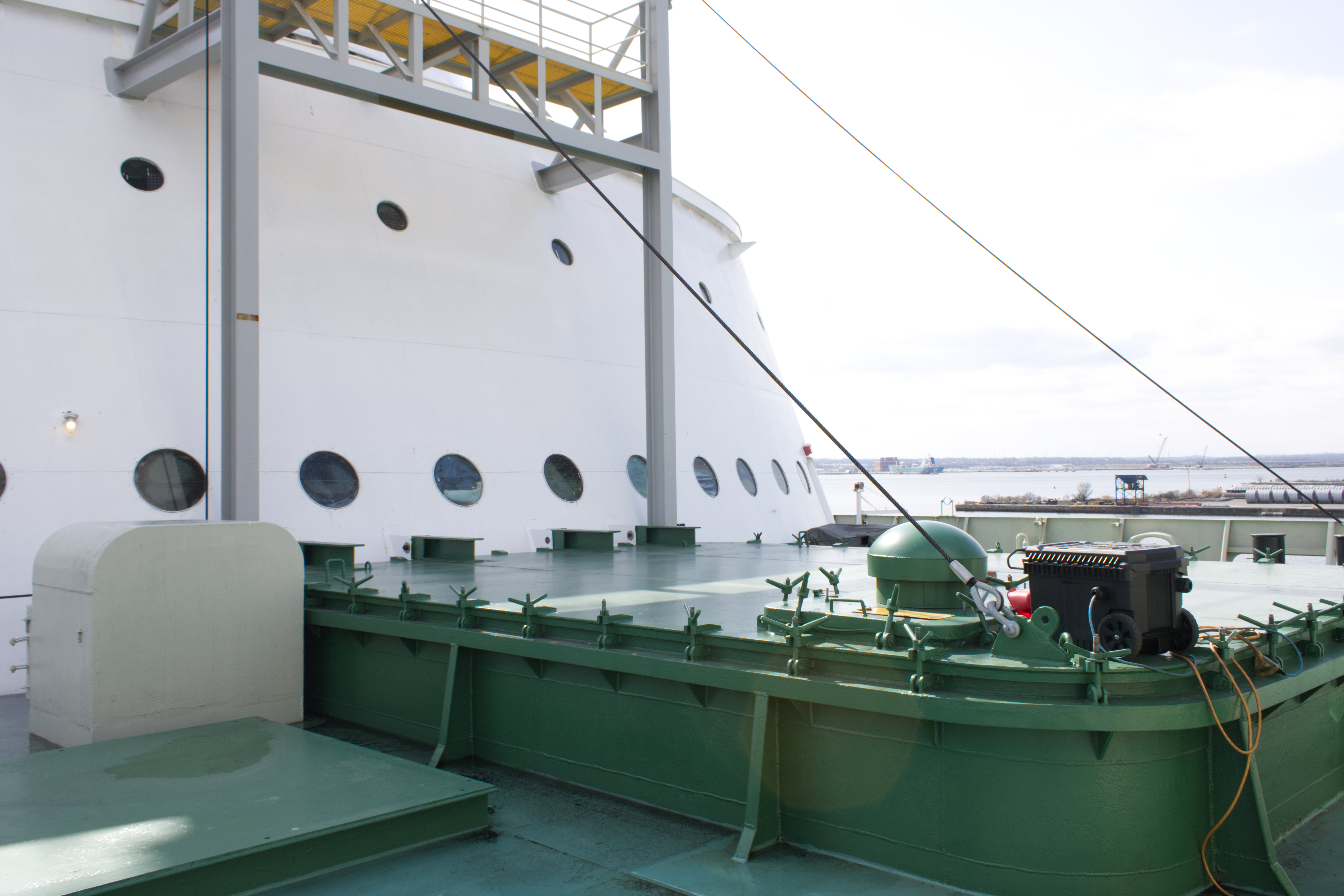
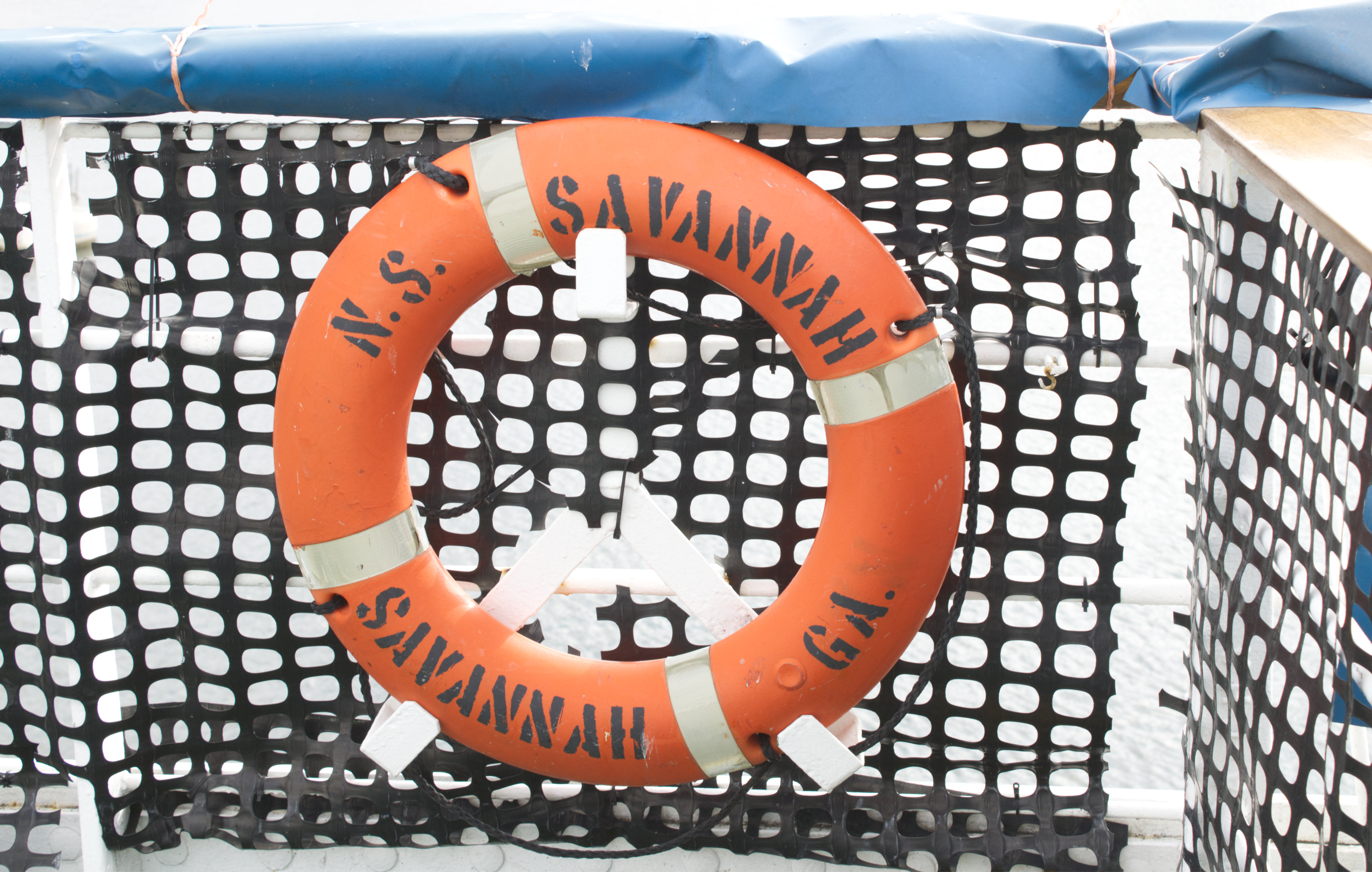

- I need to mess with this and other rope pcitures as I think they’d be a fun desktop background. *
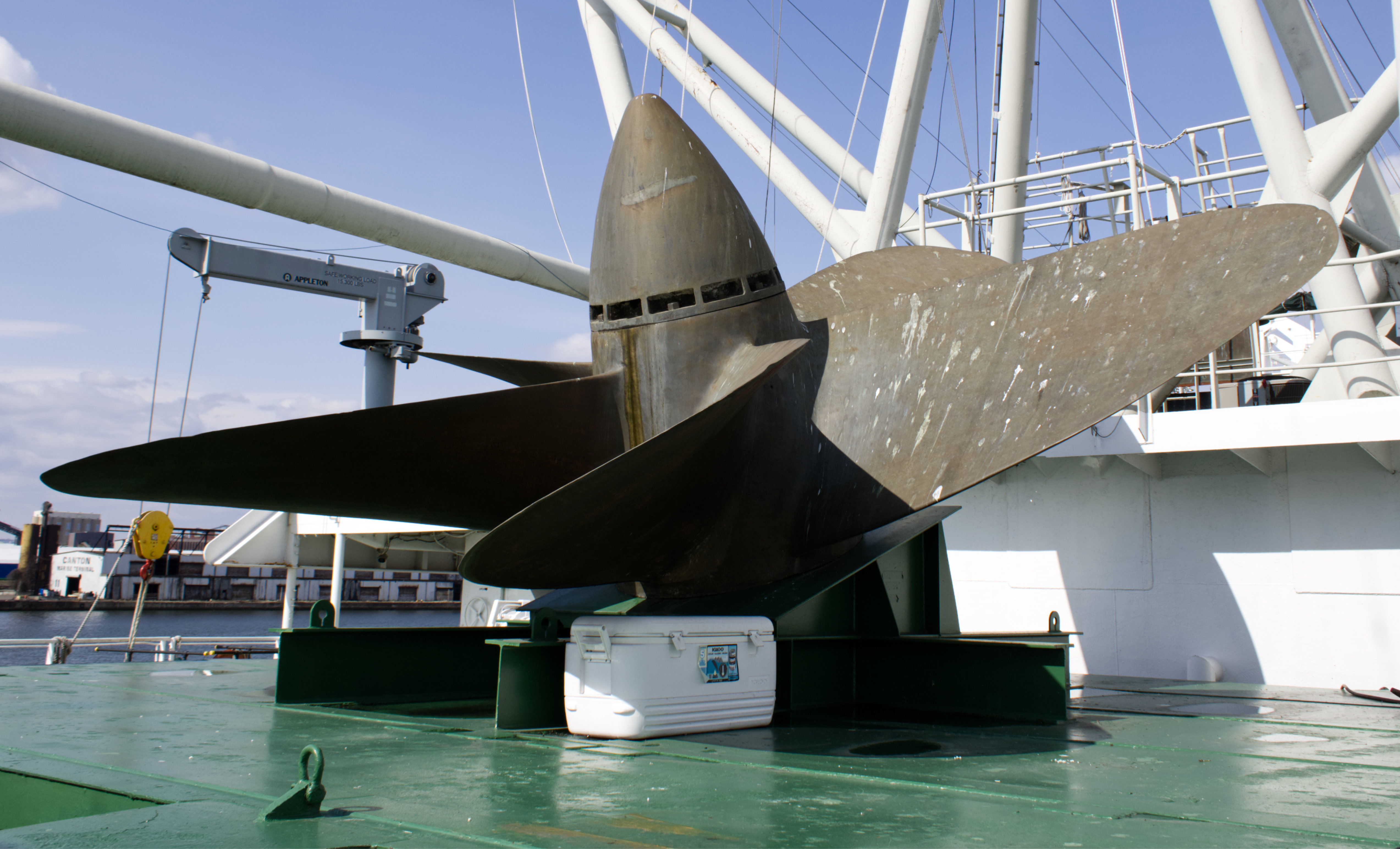
To my understanding, under normal operations the ship would have carried a spare prop, but sadly this is the only one it has, as the ship is long removed from being able to move under its own power.
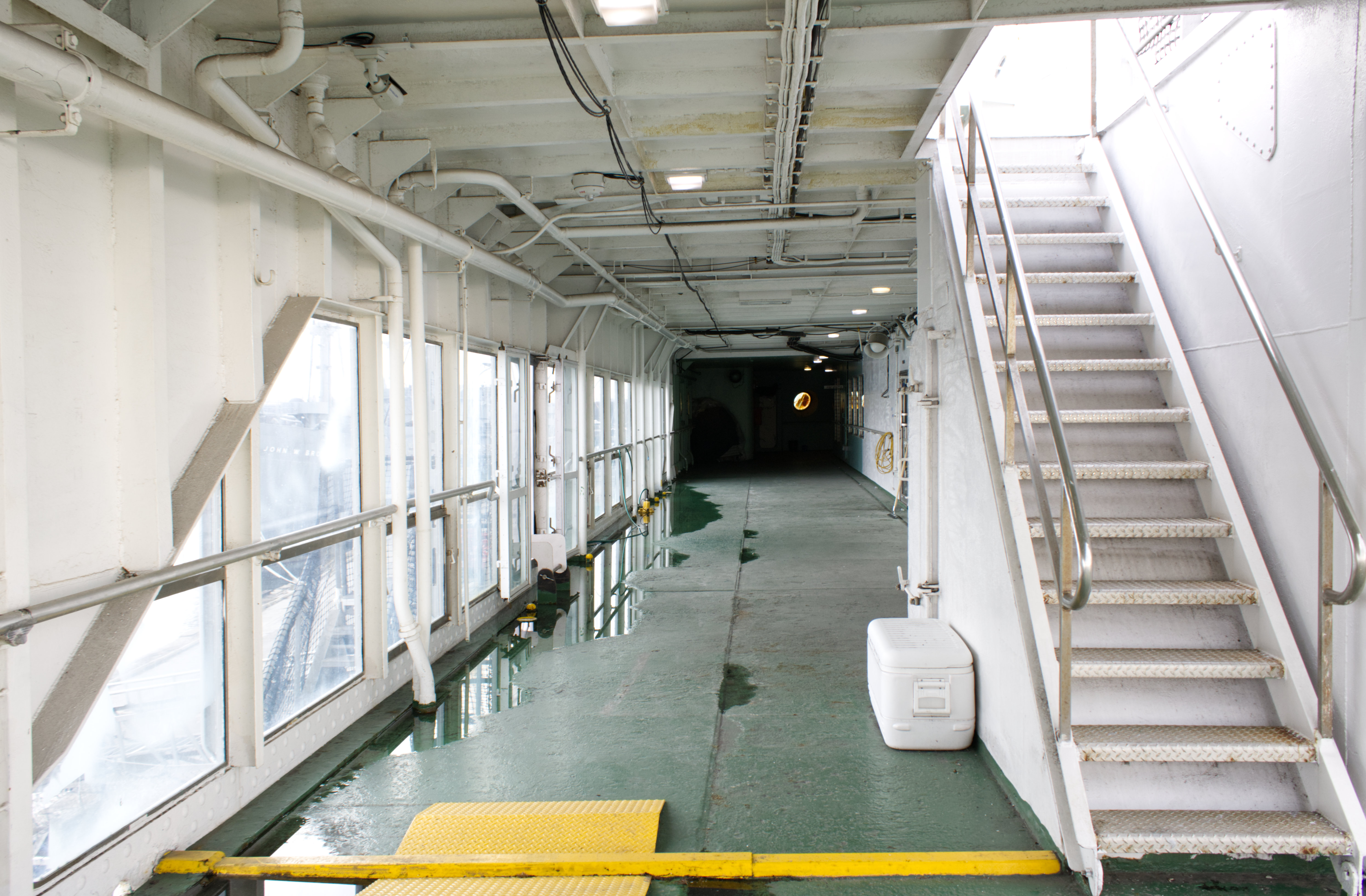
This passageway is adjacent to the pool area shown above and one of the areas passengers would likely access while the ship was underway.
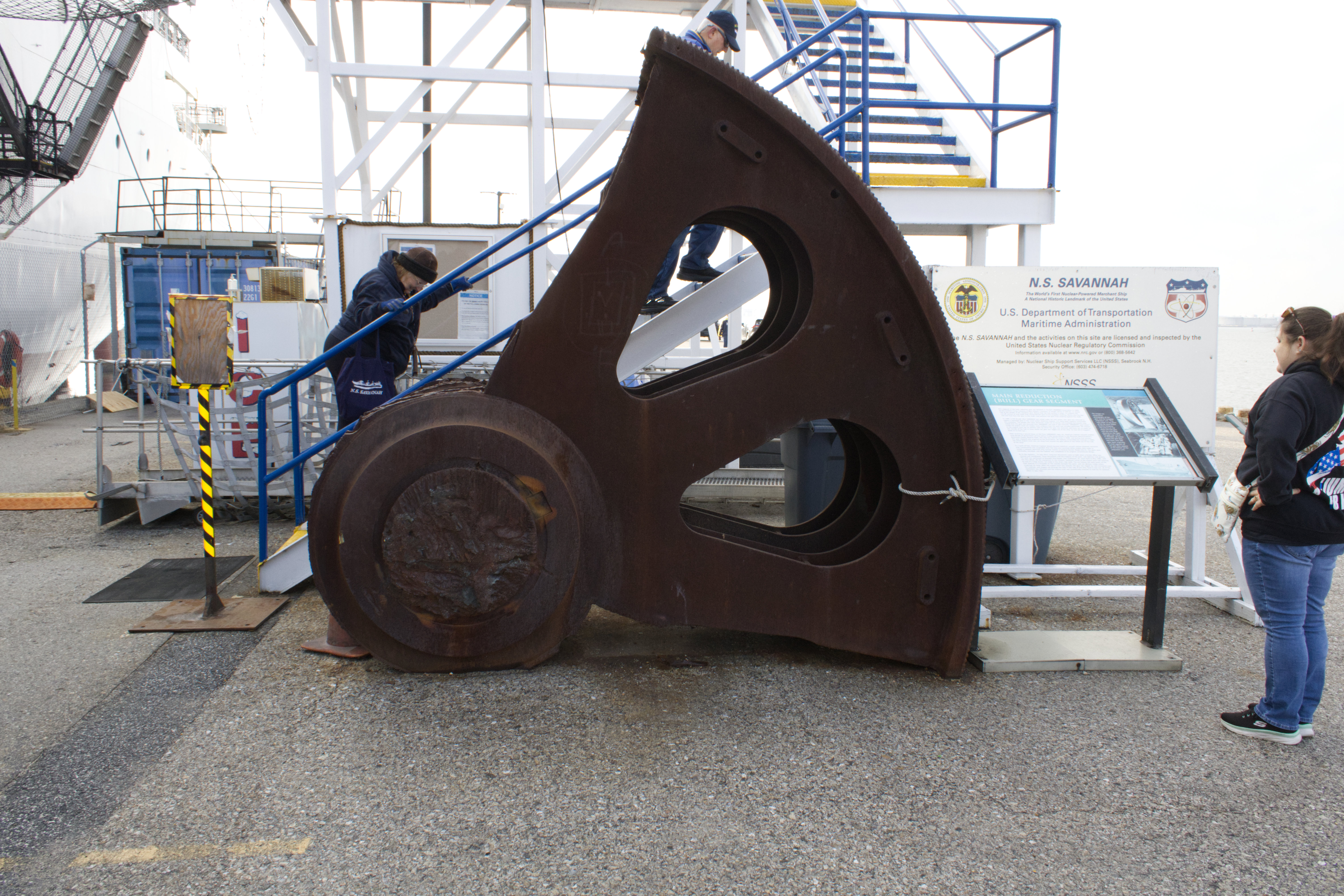

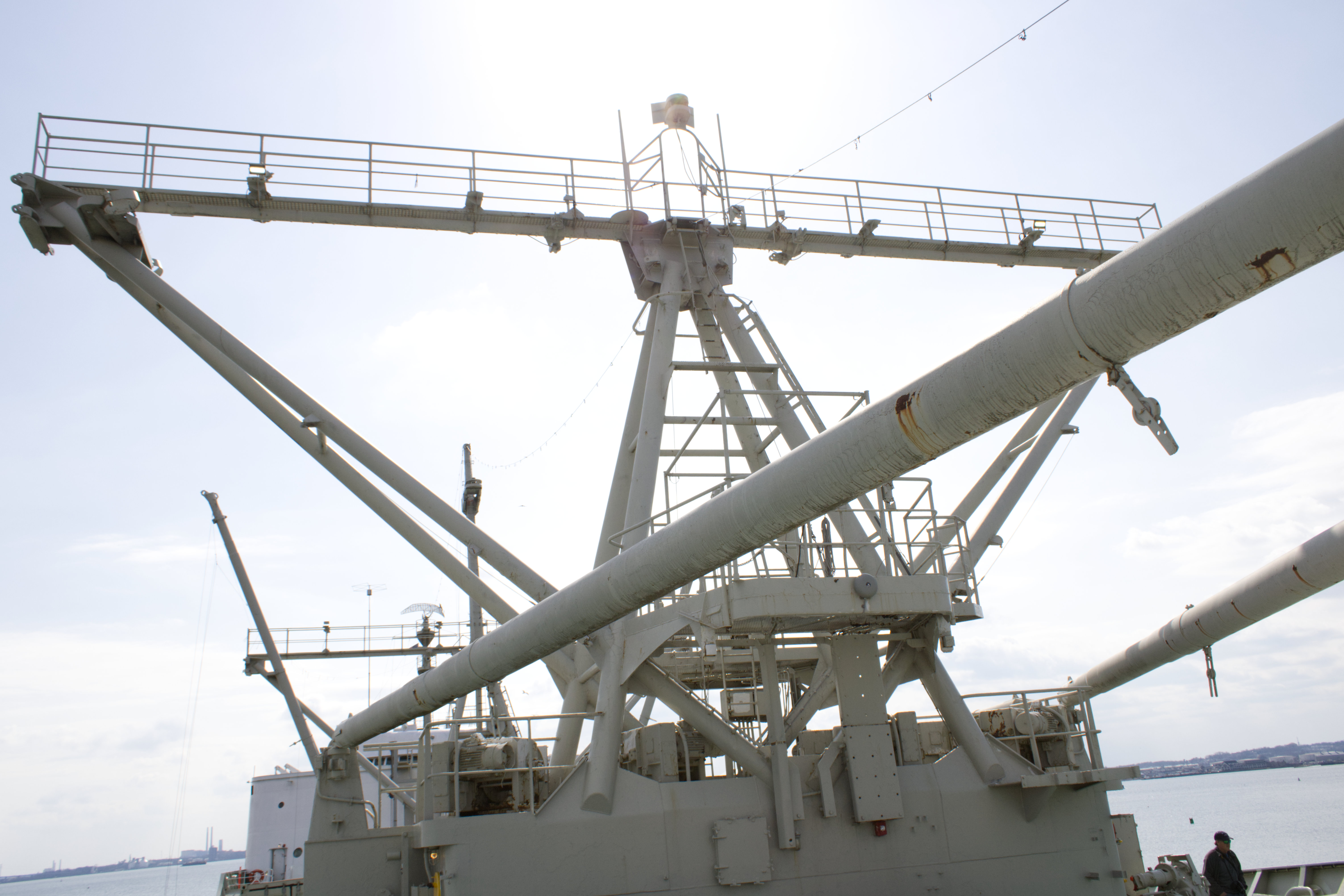
That’s ultimately the core of the tour. It’s a weird mix as this is still a “working ship” in the sense that maintenance and decommissioning is being performed. It’s not fully restored, but the ship’s beauty still shines through. This isn’t a massive, squarish, vessel but a smaller and more nimble vessel. The tour was fascinating: The meeting we attended was part of their effort to find some organization willing to take on this vessel’s maintenance and true restoration. They’re looking for millions and even the current dock space is quite expensive. This is a fascinating time capsule: a doomed attempt tot take on the airplane as the best in transportation.
As I said, I’m finishing this post in the wake of a major disaster involving a ship ten times the tonnage or one and a half times the length of the Savannah colliding with a bridge support. The disaster aspects make me think the obvious: Well, at least the Key Bridge doesn’t require nuclear cleanup teams! On the other hand, a smaller ship might have done better in the circumstances: The Savannah was pulled from service before the Key Bridge was even built, and I do wonder if it’s much lower tonnage would have done less damage. Maybe smaller ships should make a comeback.
I’m hopeful the Savannah will find a home. It really is and amazing technological feat and deserves to be preserved. It is interesting both technologically and as an artifact of the era in which it was built.
The Savannah needs a home. It’s current owned by MARAD with an interest from the Nuclear Regulatory Commission, but both have good reasons to want it off their books. If no suitable is found this vessel will either be left to rot in a reserve fleet or just plain scrapped. Both seem like a sad ending for such a unique piece of history.
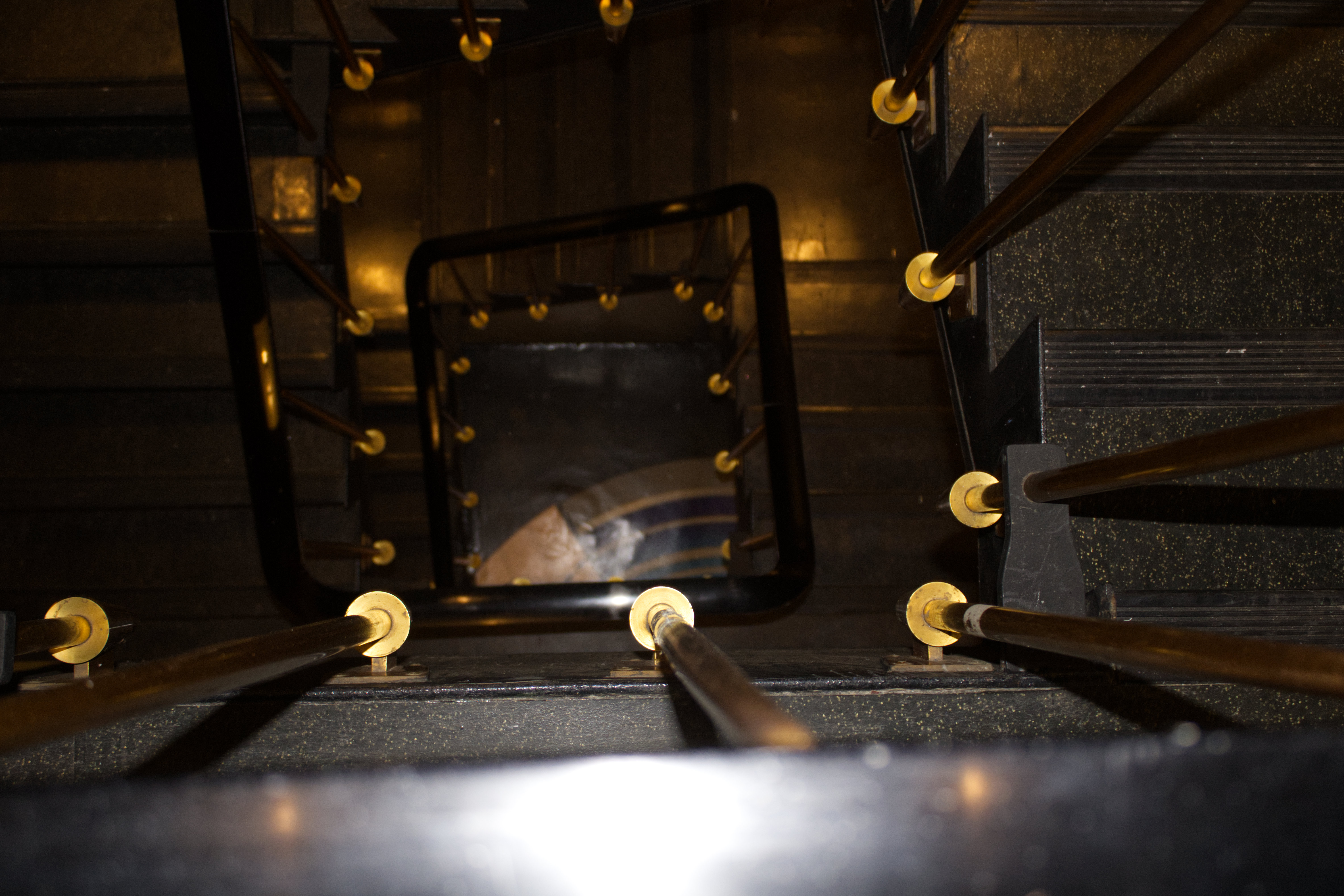
Some other thoughts:
- The ship is not accessible by modern standards. There’s a primary stairwell for guests and at one point they had an elevator, but it’s not functional and extremely tiny.
- The ship has a definite ‘Bond villain’ aesthetic.
- We hope to tour it again: There’s an open day in May during which we might be able to see the cleaned reactor space.
- I really got hung up on the thought of how travel in that era could take weeks. 60 guests in a very small space means you will almost need to be social with your neighbors.
- The Savannah was not allowed to visit several countries that had strong anti-nuclear sentiments. It also, as a prototype, has an advance team to work out clearance and emergency protocols.
- Several nations experimented with nuclear vessels beyond the military. The most successful were Soviet icebreakers, but other nations did try transports.
